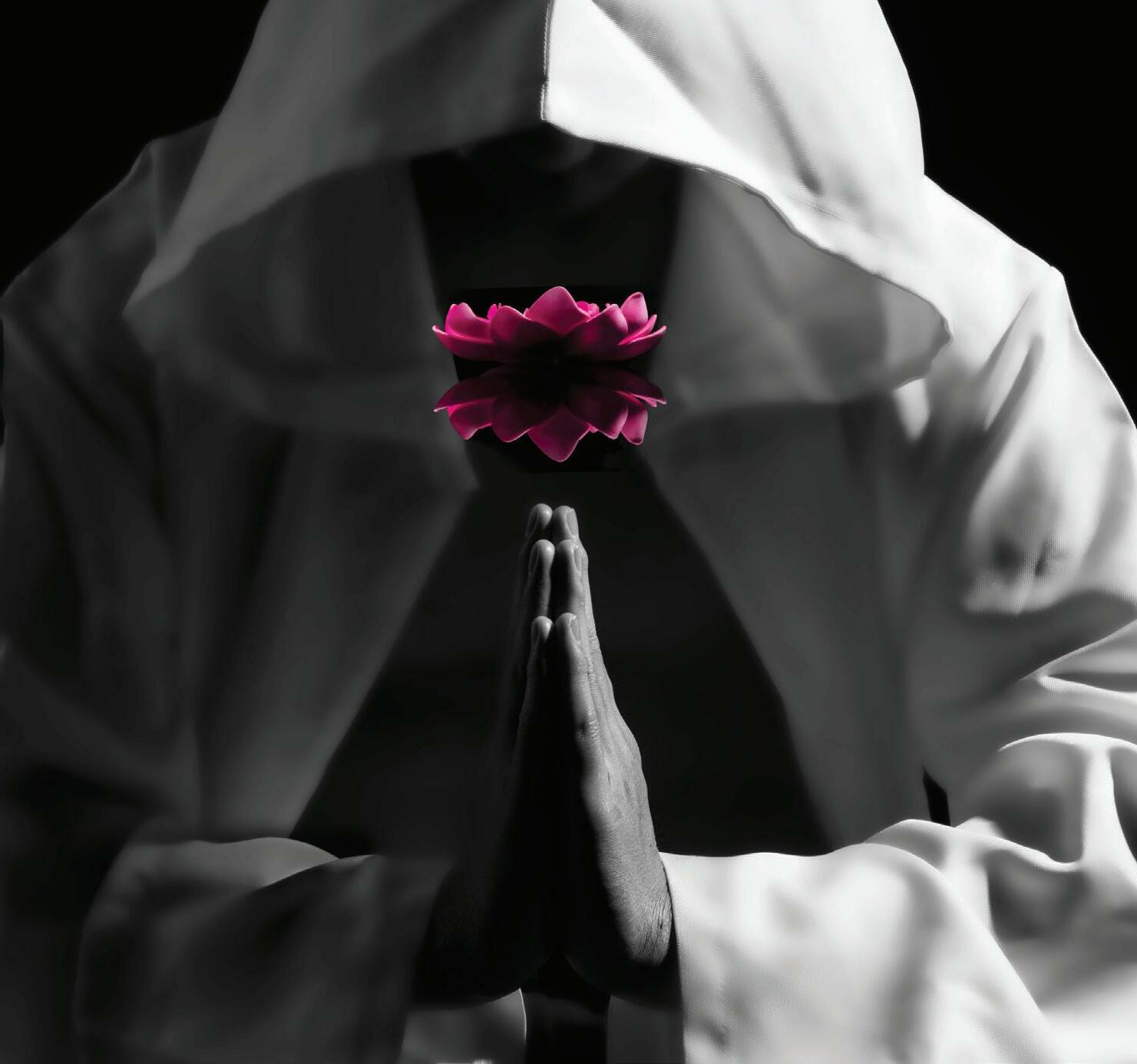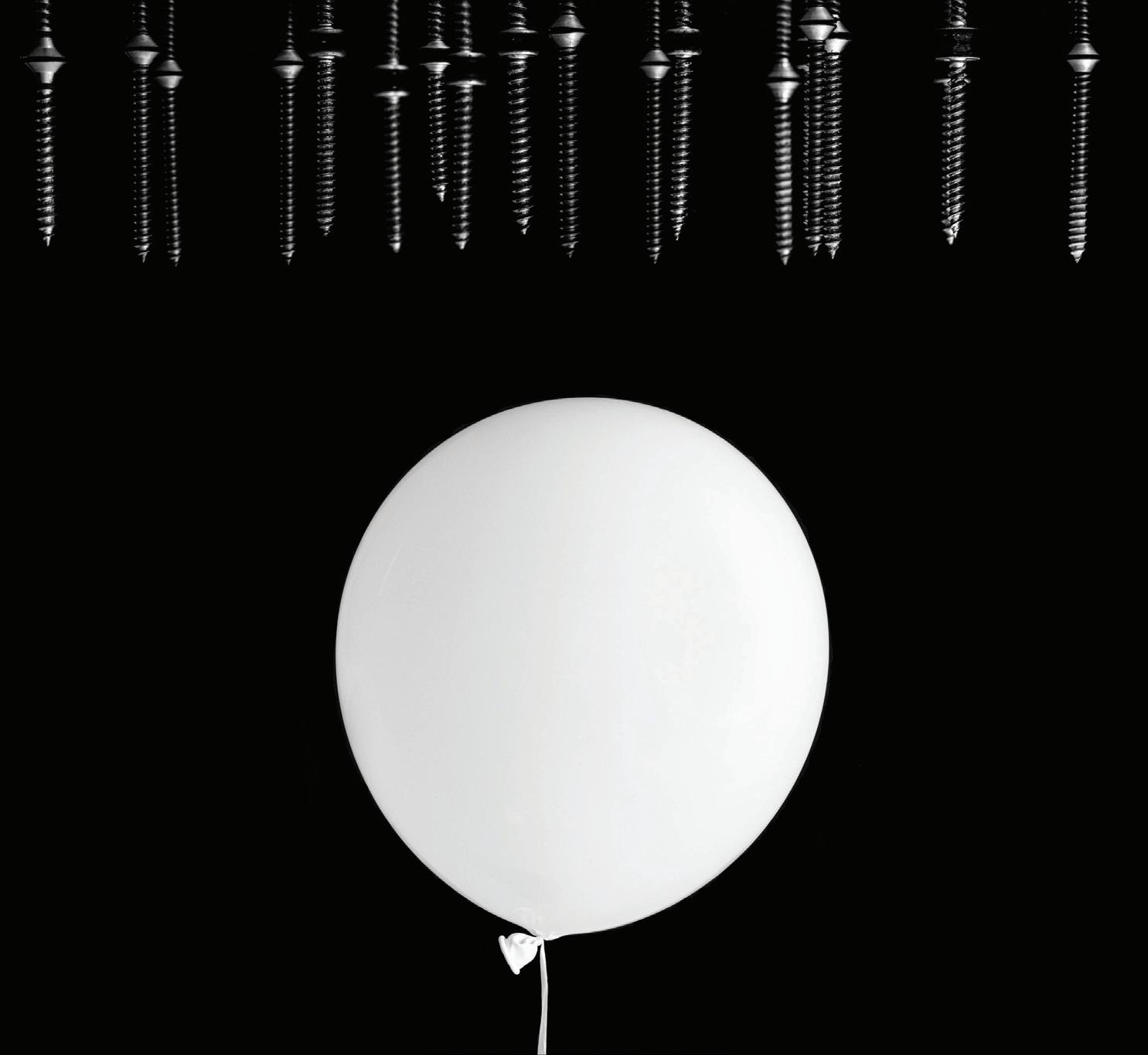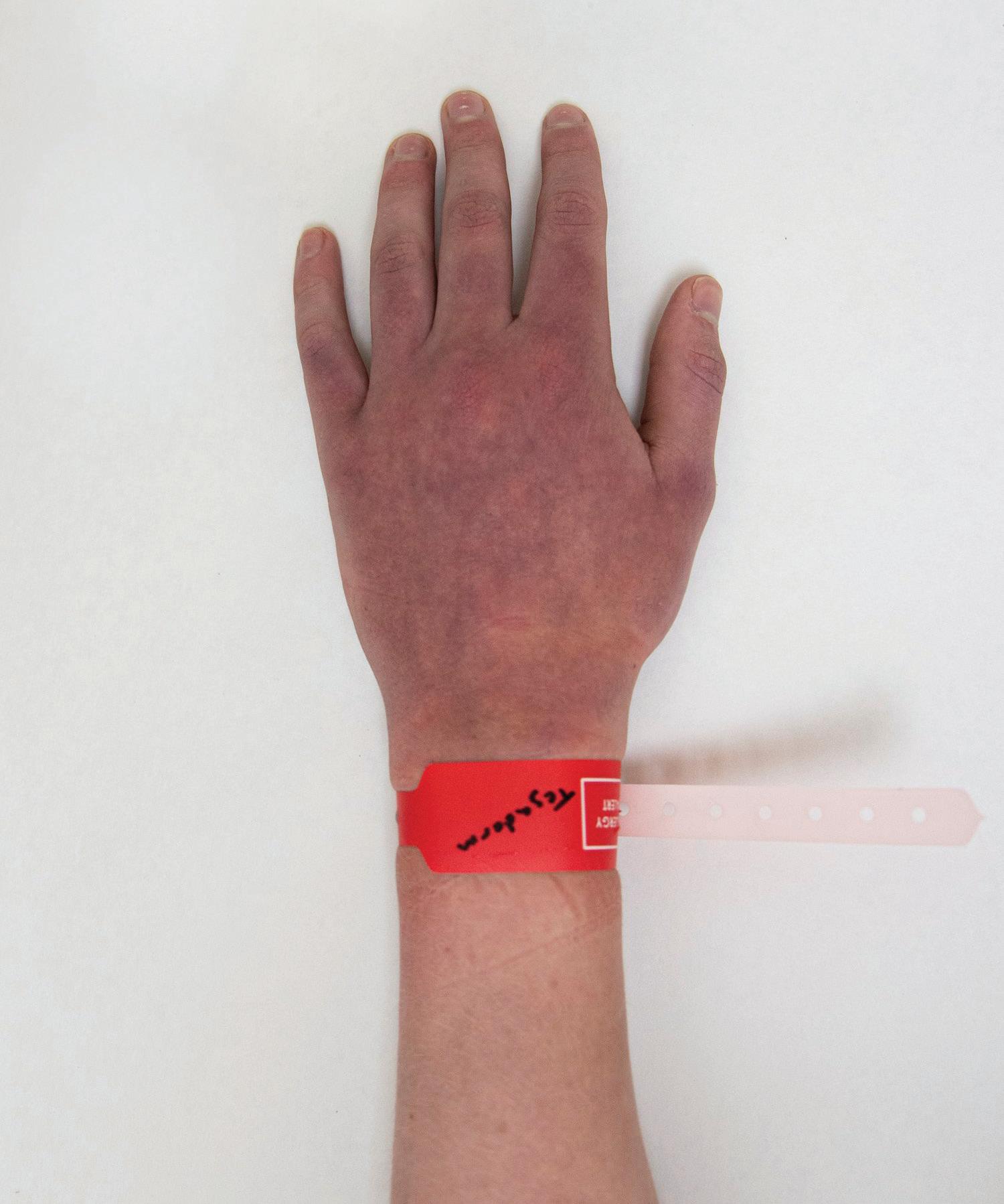REMARKER

FRIDAY, FEBRUARY 3, 2023 VOLUME 69, ISSUE 4


FRIDAY, FEBRUARY 3, 2023 VOLUME 69, ISSUE 4
With an uncanny ability to emulate human writing, chatbots like OpenAI’s ChatGPT-3 have raised many questions about the future of education and the workplace.
See coverage, pages 14-15.
COVERAGE

Dr. David Vanderpool ’78 is the school’s first recipient of the Lee Smith ’65 Courage & Honor Award, the school announced Feb. 3.
The award — created in Sept. 2021 in honor of the school’s first Black graduate — recognizes an alumnus who exemplifies the school's core values of courage, honor and integrity.
“It’s extremely hard to try to imagine what kind of courage and honor that it would take in order to really propel our entire community forward,” Director of Alumni Relations Alex Eshelbrenner ’04 said. “I think we are now in a position to reflect on ourselves and realize how much greatness has emerged from Lee [Smith ’65] facing such adversity and moving our community forward.”
Vanderpool received this designation for his contributions in revitalizing and supporting the devasted communities of
countries that’ve undergone natural disasters.
As most of the world watched the catastrophic 7.0 magnitude earthquake obliterate Haiti in 2010, Vanderpool ran to help provide the damaged country with modern medicine and equipment.
“I was doing incredibly well in Nashville, TN as a general surgeon, but I felt like there was some gap or hole in here,” Vanderpool said, tapping his heart. “One that could not be anatomically found and wasn’t fulfilled, and so following the earthquakes in Haiti, my family and I decided this was an amazing opportunity, so we moved.”
Once on the ground, Vanderpool focused on three main points of improvement — education, healthcare and nutrition — while partnering with local government and religious officials.
“In Haiti, Christianity is the predominant religion, so we worked with the church there,” Vanderpool said. “A great lesson from my work has been that partnerships are the
foundation for improvement in these communities.”
Another lesson that significantly impacted Vanderpool was the plethora of opportunities found in the United States.
“It hit me how fortunate we are in the U.S. and at St. Mark’s,” Vanderpool said. “They’ve allowed me to pursue these opportunities to help those who are less fortunate.”
For Eshelbrenner, these values are precisely what the Lee Smith ’65 Courage & Honor Award stands for.
“What's really exciting about the award is the idea that it’s about doing something for other people,” Eshelbrenner said. “It's not just about making St. Mark’s better, or about making your career more optimal. It's about making our world a better place.”
And Vanderpool has done just that.
“People can only impact small pockets or areas,” Vanderpool said, “but at the end of the day, I know the areas and communities that I’ve worked in are a better and safer place. To me, that matters most.”

Hate him all you want. Maybe you hate him because he’s palling around with the far-right. Maybe you hate him because he seems to have lied about literally everything except being gay. But George Santos is the only person in the entire Swamp of Dreams who is following the number one rule of politics: having fun!
George Santos is the envy of the world for the same reason I bought (screenshotted) a Trump NFT and why whenever I click on an article in the National Review, all of the advertisements on my browser overshoot my age by around half a century and try to sell me gold coins. It’s why the horribly annoying spam emails I get from Democrats begging for donations seem to mention actual elections and are somewhat lucid, but Republican emails scam old people into giving monthly donations they’re not aware of and pretend like a message is coming personally from Donald Trump, to YOU, because the DEMON RATS are trying to OUTLAW BEING AMERICAN!
You see, the right wing has a voter base that allows certain people in politics to have a bit of extra fun. Some may call these fun-havers grifters , but I think that sticks too much stigma on people just following the number one rule of politics.
It’s easy to see why rightwingers fall for this type of stuff way more than lefties do when you think about the extremists for both sides. When I picture a left-wing extremist, I think of some dork in glasses who wants to “queer the literature” for some reason. When I picture a right-wing extremist, I think about that guy at the capitol riot in the viking costume.
There is some sort of cultural difference here that allows Republican operatives to already know George Santos lied about everything and just keep supporting the campaign because it would be funny, but makes many Democratic primaries actual ideological fights, often to the detriment of the party itself.
The solution here is obvious: Liberals just need to have more fun.
Stop worrying about college admissions — you can just lie about it later. Just say you ran a hedge fund, or three. Stay true to the Founding Fathers’ intention of America being the most awesome, epic, jumbo-sized country ever, man.
Is it right for staff members to protect their schools with firearms?

See coverage, pages 6-7
GUARDIANS OF THE
violence in schools continues to occur, many are resorting to a guardian gun law, where certain trained faculty and staff members are alllowed to carry guns in order to prevent mass shootings. Is this necessary to implement? What does it take to be a protector of a school?
As
MULTICULTURAL NIGHT
Marksmen Multicultural Night will be held March 1 on campus. Students and parents can sign up to host tables showcasing their cultural backgrounds by showing off food and other assorted items. This is the second time the event will be planned and hosted by the Inclusion Diversity and Leadership Council. Additionally, cultural performance groups will perform in Spencer Gym, such as Hawaiian dancers and Chinese lion dancers.
HMMT MATH TOURNAMENT The school’s Math Team will participate in the HMMT, a high school math competition that will take place on the MIT campus this year Feb. 17-19. Based on performances throughout the fall, eight students and two alternates were chosen to be on the HMMT team for the school. This year’s team consists of senior Alex Wang, juniors Christian Neisler and Kevin Lu, sophomores Surya Dinesh, Linyang Lee, Max
Yan and Deven Pietrzak and eighthgrader Tony Lu. The alternates are sophomore Andrew Xuan and junior Rishi Rai.
MEALS ON WHEELS The Community Service Board hosted a Meals on Wheels event on Martin Luther King Jr. Day. The event benefited adults 60 and older who are homebound and unable to cook for themselves. Students helped pack meals into cooler bags and then loaded them into volunteers’ cars for delivery to those in need. Students joined thousands of Americans to make the MLK holiday ‘a day on, not a day off’ by serving their communities.
HARVARD MODEL UN Members of the Model United Nations club attended the Harvard Model UN session Jan. 26-29. The four-day conference in Boston is one of the most prestigious Model UN events in the world, with thousands of students participating from countries
Breaking down this month’s hot topics.
What happened: Andrew Tate detained in Romania

When: Dec. 29
all over the world. Only a few members of the club attended the event, with each having won awards at previous Model UN competitions. The club primarily participates in local competitions in Dallas or Austin. Club sponsor and History and Social Sciences Department Chair David Fisher initiated the Harvard trips in 2018.
HABITAT FOR HUMANITY The final Habitat for Humanity build session will take place Feb. 18. The build began Jan. 7, with builds taking place every week. Over the past month, Marksmen and Habitat for Humanity staff workers have been constructing a home in South Dallas. The build sessions are hosted by St. Mark’s and Hockaday, alternating each week. Each Habitat for Humanity workday is worth five service hours, and students who bring their parents with them to work will receive double hours. The final deadline for community service hours is April 10.
A dive into the psychological aspects of making resolutions.
Importance and relevance: The influencer’s arrest on charges of human trafficking has sparked much controversy online.
What happened: Kevin McCarthy elected Speaker of the House
When: Jan. 7
Importance and relevance: After many votes, the House of Representatives finally elected Kevin McCarthy as Speaker, scoring a victory for republicans.

What happened: Microsoft laid off more than 10,000 employees.

When: Jan. 18
Importance and relevance: One of the latest tech giants to do so, Microsoft’s layoff was primarily due to economic struggle, according to CEO Satya Nadella.
Examining two approaches to the college admissions process.
Is it ever justified to come to school while sick?
What happened: A mass shooting during a Lunar New Year celebration in Monterey Park, California.

When: Jan. 21
Importance and relevance: With 11 individuals killed and another 10 wounded, the Monterey Park shooting is among the deadliest to take place recently. The shooter, 72-year-old Huu Can Tran, injured Asian-American women ages ranging from 50 to 70 years old in the Star Ballroom Dance Studio. The motive, though unknown, is suspected to be based off personal reasons.
The most epic, jumbo-sized country everCLASSROOM gun
MISSING
THE MARK
As a new year dawns, many people will shoot for the stars with their New Year’s resolutions.
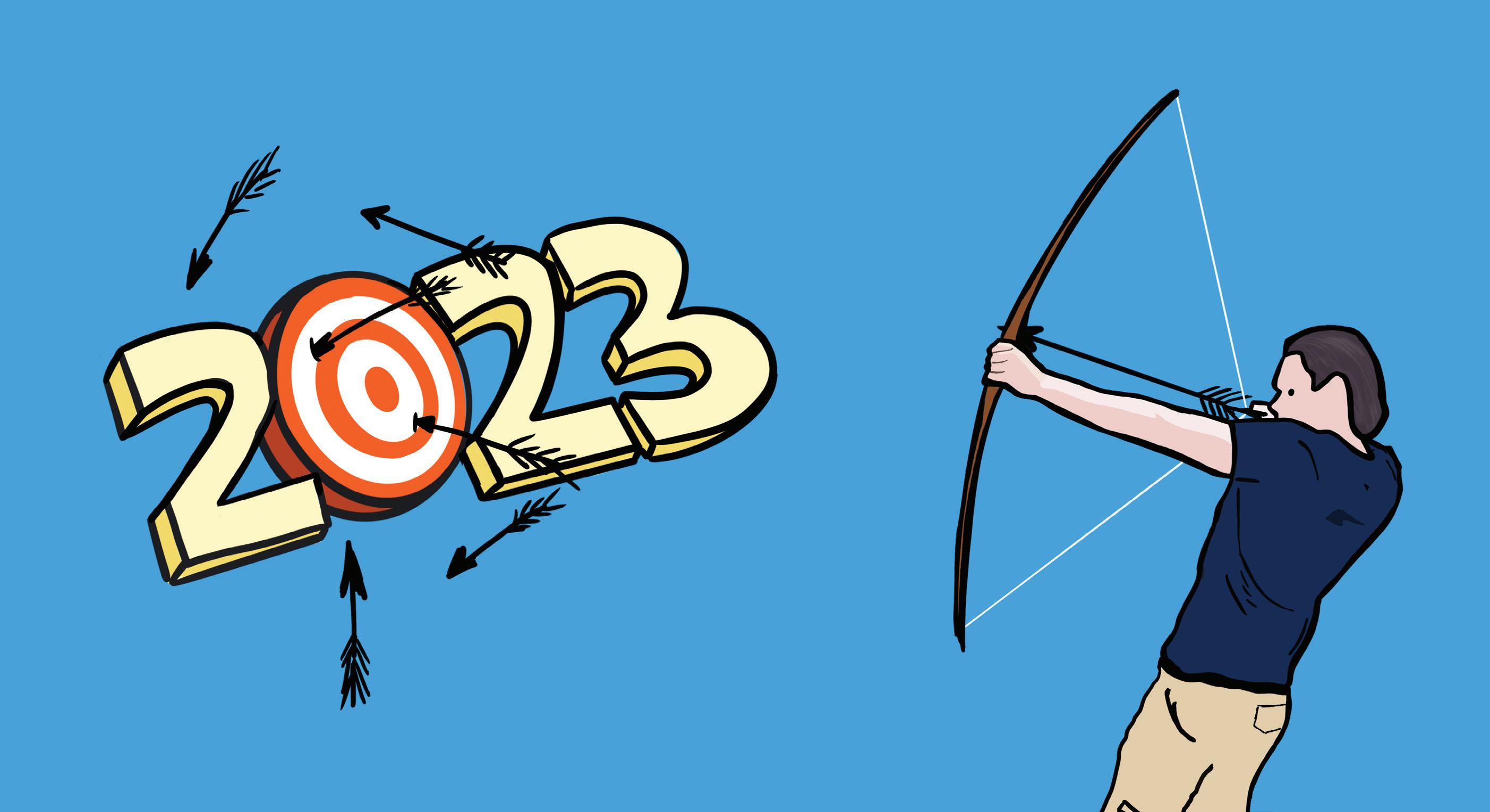
Welcome to 2023, a new year full of new possibilities. As is customary, many people around the world will be making New Year’s resolutions. The number of these people who actually follows through, however, will be far fewer. With this in mind, we set out to answer one question: what does it take to accomplish one's goal?
STORY Grayson Redmond, Hilton SampsonOver one million people are packing Times Square to see the ball drop.
Over 15,000 pounds of fireworks are being set off at Reunion Tower in downtown Dallas.
Over 1,000 people are packing the local Planet Fitness.
What holiday could it be but New Year’s?
A common tradition going along with the holiday is, of course, making New Year’s resolutions, but how many people actually stick to them?
According to a study by the University of Bristol, not many. In fact, only 12 percent of participants end up keeping their resolutions in the end.
Junior Ethan Gao has never been a fan of setting grand New Year’s resolutions. Instead, he finds setting realistic goals and revisiting them on a daily basis makes attaining them much easier.
“It’s easier to see that you’re making progress if you intentionally make a plan, and then it’s easier to continue building on that progress,” Gao said. “If you’re just doing whatever you want and hoping you get better, one day you might feel really motivated, and you might actually do something that helps you improve. But then, another day, you might do something that you think is making you better, but it’s unclear because there’s no metric to measure whether you’ve actually had a productive day.”
Gao believes that breaking down one large goal into smaller ones helps to make a task more feasible and makes it easier to track one’s progress.
“Having those small victories and celebrating those small victories really helps you motivate yourself to get
the job done,” Gao said. “You don’t cure cancer in one day, right? You take one small step at a time, and each step is an important step to turning your dreams into reality.”
For sophomore Henry Sun, however, working towards one massive goal proves to be more effective than a series of smaller ones.
HENRY SUN Sophomore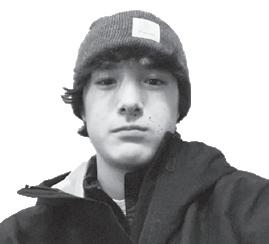
“A lot of people say to make small goals that are easy to do, but when I set goals, I like to think of an impossible task and then challenge myself to do it,” Sun said. “Once I imagine that task, I make a plan for how I’m going to accomplish what I need to do.”
Sun spent the spring of last year participating in the 75 Hard challenge, a grueling plan intended to improve an individual's mental and physical fitness. This was the first major undertaking Sun tackled, but it won’t be the last.
“A couple of weeks ago, I decided that I’m going to run the Dallas Marathon this year,” Sun said. “I’ve never done endurance running or any kind of major running in my entire life, but I want to do something that I thought was impossible.”
Sun aims to achieve ambitious goals like these by developing daily habits that he can carry with him for the foreseeable future.
“I read a book called ‘Atomic Habits,’ by James Clear, and the gist is getting one percent better at something every day,” Sun said. “So I went for a run and then figured out what one percent of the distance of that run was. The next day, I ran the same distance plus one percent more, and the next day I added another percent.”
Upper School Counselor Dr. Mary Bonsu agrees that
creating a routine is the key to finding success in goal-setting.
“It’s all about habits,” Bonsu said. “It’s saying for 30 to 45 days, I am going to build a habit that makes it possible for this thing to actually occur. One way to do that is to make sure that the thing that you’re trying to do is done before the thing that you are naturally inclined to do."
According to Bonsu, setting deliberate goals is the first step to accomplishing them.
“You have to be very, very intentional about your goals, and sometimes New Year’s resolutions are set without a lot of intention,” Bonsu said. “They just rest in that area of your brain that sees your ideal self, what you want to be or how you want to identify. It’d be great to keep them, but most people don’t see them as a goal.”
Sun agrees that discipline and intentionality are essential to achieving your goals.
“New Year’s resolutions are good if you have the discipline to stick to them, but if you fail a New Year’s resolution, some people will say, ‘Well, it’s too late now,’ and then just wait until next year to try again,” Sun said. “However, if you start a goal over the summer, and then you fail it like before school starts, you have no excuse really to not do it again. So you just have to keep going.”
For Sun, picturing the moment in which all his work will finally come to fruition is what gets him through the tough times.
“If you don’t want to do something, if you can’t get out of bed in the morning, or if you can’t put on your shoes to go for a run, imagine yourself reaching the end goal,” Sun said. “For me, I imagine myself crossing the finish line of the Dallas Marathon, and then I know I need to get up and go to work.”
After a strong showing in the Metroplex Math Competition on the first weekend of January, the Math Team is now ranked the 10th-best team in the nation.
“St. Mark’s really dominated the event,” Genecov Master Teacher and Math Team sponsor Amy Pool said. “We also had a much larger team than any other school there, which certainly gave us an advantage. There was also a lot of talent on the team.”
This year’s competition was a return to normalcy after previous competitions had been altered by COVID restrictions.
“A lot of schools were not back in session or were in the process of rebuilding their program,” Pool said. “After two years, it was nice to get all of us back together again.”
Pool praised the performances of all members of the team and emphasized that all members contributed equally to their recent success. She believes this year’s team is especially strong.
“We have a lot of really outstanding people right now, so it’s hard to pick out anyone in particular,” Pool said. “We just have a lot of really strong players this year, which is good.”
The pipeline between Middle and Upper School programs is an important factor in the success of the Math Team.
Middle School students interested in the team have been invited to attend events such as the Metroplex Math Competition in order to get a feel for the Math Team experience.
“We took a few [Middle Schoolers] to Texas A&M
back in the fall, and we took some to the Metroplex earlier this month,” Pool said. “And that’s also a great tool, because some of those students see who some of their teammates would be if they decided to continue next year.”
Sophomore Andrew Xuan and Junior Arnav Lahoti coach the Middle School Math Team, while sophomores Linyang Lee and Max Yan and senior Alex Wang coach MathCounts.
“We’re excited about some of the up-and-coming talent,” Pool said. “It makes all the difference in the world when they’re making those connections.”
Pool says the Math Team’s secret to success is treating it like a puzzle.
“You have to be willing to play and not be intimidated by a challenge.” she said. “That’s the nature of math in general.”
JUST KEEP WRITING
While some include only a select few extracurriculars on their resume, others include many, many more.
MOTIVES BEHIND ACTIONS
As more of an emphasis is placed on college applications than ever, students have begun considering the ramifications activities will have on their resume from a very early age. For better or for worse, motivations for joining extracurriculars have shifted more and more towards impressing these schools. Have our students followed this pattern?
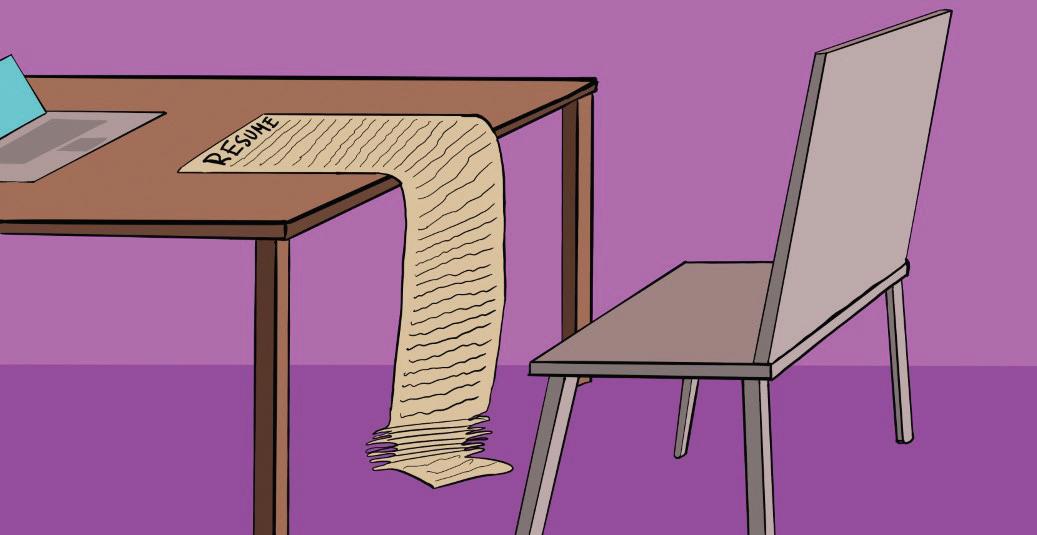 STORY Grayson Redmond, Joseph Sun
STORY Grayson Redmond, Joseph Sun
There are two phrases every Marksman is guaranteed to hear during their time here:
“Where are you planning on applying for college?” and “Make sure to find your passion!”
For some, they go in one ear and out the other. Many others take them to heart.
Oftentimes, the answers to these two questions can overlap, but the line often blurs between signing up for an activity because of genuine interest or only to make one’s resume appear more attractive.
To gain a better understanding of this divide, we sat down with two driven students to learn more about why they chose their respective fields and what they’ve learned from them when all is said and done.
Junior Noah Cathey is deeply involved in a staggering amount of extracurricular activities both on and off campus, but one that he enjoys the most is journalism. A member of the Marksmen yearbook and the Marque literary magazine staff, Cathey says it was love at first sight with the journalism program.
“When I came to the St. Mark’s open house, one of the things I really liked was the journalism program,” Cathey said. “I knew that if I got in I’d want to be involved in it, because it’s one of the things that I want to do in the future. And, obviously, the program here is always
very strong. I knew I could use journalism to make a difference, as I believe it is the voice of the school, and it tells stories.”
After many years here, senior Rishab Siddamshetty discovered his passion for business.


“Freshman and sophomore year was when I really hit my stride, figured out what I wanted to do and started taking the steps to get there,” Siddamshetty said. “I knew I wanted to go into a math-related field, most likely business, so I tried to join activities relating to it, like the Business Consortium and the Lion’s Share Business Journal , to make sure that was really what I wanted to do.”
Like Siddamshetty, Cathey joined certain groups specifically to develop his passions. Since being on the Marksmen yearbook and the Marque literary magazine, he has gained some valuable insight to take with him going forward.
“With journalism, a lesson I learned was how to get the job done,” Cathey said. “It doesn’t matter if it’s 1:00 in the morning on a Monday, if you have a final exam the next day or if you have to drive 40 minutes to interview somebody, you always have to get the job done. Another thing I learned was taking accountability, which is something that journalism teaches more than anything else I do. For example, I’m responsible for pages in the yearbook, so if I mess up or don’t turn them in on time, that’s on me.”
Cathey strongly believes students should dedicate themselves to something they truly enjoy as he did, rather than for the sake of impressing a college admissions officer.
“Passion and dedication are two traits that people lose when signing up for things just because they look good on a resume,” Cathey said. “If you attempt to
increase the volume of stuff you sign up for just to appeal to colleges, you lose a lot in the quality of the work that you do. I think if you give 100% on three things, you’ll be a lot better off versus giving 20% on 30,000 things. Otherwise, you’re going to end up selling yourself short.”
However, Siddamshetty posits that, for better or for worse, college admissions must be considered nowadays when following one’s passion.
“These days, college admissions are so unpredictable, and I knew I needed to have a certain amount of extracurriculars,” Siddamshetty said. “So yes, I was trying to meet that ‘bar.’ But at the same time, I was also just trying to figure out what I wanted to do with my life. I also signed up for a lot of clubs just because I thought they sounded fun, like Ping Pong Club.”
However, looking back on his Upper School career, Siddamshetty advises others to balance devoting time to colleges and extracurriculars and simply living in the moment.
“I do have some regrets that I sacrificed a lot of fun by focusing on academics and studying,” Siddamshetty said. “Obviously, those things are important, but dedicating all that time to activities and college applications when I could have been forming closer bonds with my classmates is a regret I have now in the second semester of senior year. I’ve started building more connections with people now, but it's something that I wish I realized earlier.”
This year, five seniors in the school’s Wood and Metal program submitted model proposals for one of their sculptures to be displayed on campus. After weeks of deliberation by the selection committee, senior Winston Lee was selected to display his work.
“It feels good to win,” Lee said. “I put in a lot of hours on journaling and planning the project, so to have it work out is a great feeling.”
However, the selection process, which is part of a four-year tradition at the school, was no small task.
“The boys had to come up with a model, a written proposal, a list of costs and a timeline [for their statues],” Wood and Metal instructor Rachel Muldez said. “Then, they had a sitdown meeting where they each had a turn to present their proposals to myself, [Fine Arts Department Chair Marion] Glorioso, [Ceramics instructor Scott] Ziegler and [Headmaster David] Dini.”
After presenting their proposals and completing
interviews, the pool of submissions was narrowed down from five to three before the final decision was made.
The five members of the Class of 2023 vying for the spot were Christian Youst, James Thomson, Sammy Larkin, Winston Lee, and John Tagtmeier.
“Most all of [their pieces] referenced the boys at this school, how they come together at the school, when they leave and how they go off into different parts of the world,” Muldez said.
While many pieces follow this general theme, the winning proposal differed from this sentiment.
“The only other model that’s different from [this theme] is Winston Lee’s,” Muldez said. “His [proposal] has a reflective surface that would not only reflect the viewer but the landscape around, just to show that some things not only change you, but change the world.”
Lee’s proposal, which features a reflective cube on a hill of rocks, has a double meaning for viewers.
“First, the reflective aspect represents St. Mark’s, in that what you put in is what you get out,” Lee said. “Second, when St. Mark’s kids look into their reflection,
they’re looking into the future. The future of Dallas and the future of the world.
For Lee, making things in Wood and Metal is enjoyable because it allows him to express himself.
“It’s a way to communicate things that words can’t communicate,” Lee said. “When you create something physical, that’s another medium to express intangible thoughts.”
The deadline for Lee’s piece to be fully assembled and ready for display is graduation evening, and it will be on display until the next project is chosen next year.
Lee’s piece will be assembled on the concrete slab outside of the Decherd Fine Arts Center. Although the project displays just one student’s art, it is also an opportunity for multiple students to learn a different, more professional side of their fine art.
“
Passion and dedication are two traits that people lose when signing up for things just because they look good on a resume.
NOAH CATHEY Junior
Many sick students debate if they should go to school, worrying about falling behind. Sick teachers face a similar dillema, worrying about their students falling behind.
With a cool rag on his head and a thermometer that reads 103 degrees in his mouth, the student is in no shape to do anything.
He’s utterly immobile. There’s nothing on his mind except the idea of sleeping for another 19 hours. At best, he’ll make a full recovery in a week.
But something compels him to get up and get dressed.
There’s no way he is going to let this happen. With his grades already threatening to dive off the deep end, he has to get up. With his starting spot on the basketball team in jeopardy, he has to get up. And he does — off to school he goes.
But at what cost?
According to Lion Tracks, students may leave school with permission from school nurses Julie Doerge and Allison Carroll.
“You really should not come to school if you are not feeling well,” Carroll said. “Whether that’s anything from vomiting to diarrhea, you should avoid coming to school.”
Lion Tracks also requires students who have experienced certain symptoms, such as a fever, to stay home for at least 24 hours. This is to prevent possible outbreaks from occurring.
“We also want [students] to be completely healthy without having to take any external medicine,” Carroll said. “For example, Tylenol and Motrin can both mask fevers, which still means illness.”
However, for many students and faculty members, staying home is very difficult. When Genecov Master Teacher Amy Pool caught COVID last year, finding a substitute teacher was near impossible.
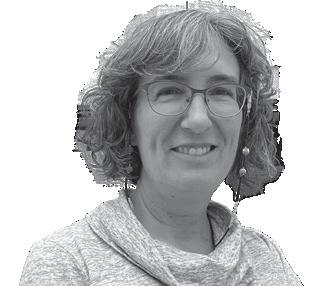

“One of the big issues for me is that it’s really hard to find a sub for AP Statistics even in the math department,” Pool said. “There’s no one else in the department who can actually come in and teach the content. And yet, there are so many lessons we have to cover for students to be ready for the AP exam. So, for me
to be gone even for a couple of days means that we may not cover all the material and the students may not be well prepared.”
With no other option, Pool resorted to remote learning, teaching students through a computer screen and a projector.
“Every day during [AP] Statistics, there was a student who volunteered to use their computer,” Pool said. “I would Zoom into their computer, and they would project me up on the screen. I would just get up, teach and go to sleep in between classes.”
Though she still found a way to teach, Pool acknowledges the importance of actual class time. With such a fast-paced course, time simply could not be lost.
“It is a real pressure to get all the material done by the end of the year,” Pool said. “To be out a full week would have meant either not covering all the material or having absolutely no review before the AP exam. And that’s not just a burden on me — that’s a burden on the students. I want to do a good job, and I want my students to be wellprepared.”
This past month, Pool found herself in a similar situation. Right after Christmas break, she began experiencing aches and sore throats, forcing her to consider the possibility of staying home. This time, however, the circumstances were different.
“In this particular case, I had a test scheduled in one of my classes for Friday,” Pool said. “I could have put the test off, but given the fact that we were coming up on the end of a semester and the second week in January was busy with tests, it would have meant my students having one less test for the semester, and some of them wanted to bring their grade up. Again, there was pressure on getting through the material in the long run.”
To solve this problem, Pool still came to school, eliminating all the stress she would have had if she had stayed home.
“I had virtually no voice, and I came to school with a mask,” Pool said. “The only way I could teach was to whisper and keep away from my students. I felt like I
needed to come in. Canceling those classes would’ve had an impact on how well prepared my statistics students would be for the AP exam.”
Because of her situation, Pool recognizes why students feel the need to come to school despite illness, but she believes they can be better about how they do it.
“I totally understand,” Pool said. “On the other hand, if I were a sick student, I would come with a mask on if nothing else. If I was really sick, I would stay home, because the only person I’m hurting by staying home is myself. Part of the reason why I may come to school is because I’m not the only one who pays the price by staying home — it’s also the students.”
Despite this, many students still try to push through sickness and continue school. When senior Sammy Larkin contracted an illness during finals week, he experienced the pain of having to make up work.
“At St Mark’s, it’s really hard to miss school,” Larkin said. “You don’t have that luxury to make up work or tests, since it just piles on. I’d much rather be miserable for one day at school than be miserable for three, or four days trying to make up my work.”
Even with the possibility of making up tests and assignments, the faster option just seems better for students.
“If you have to make up something, you’re going to feel it four days later when you have a ton of other stuff to do,” Larkin said. “It’s just very, very difficult.”
Larkin, also a captain of the varsity swimming and water polo teams, feels the stress even more as an athlete.
“For class, the worst-case scenario is that you can make up a homework assignment,” Larkin said. “You can’t make up a practice — if you miss a practice, there’s no getting that back.”
In the end, Pool recommends that students contact teachers as soon as possible to help minimize the workload.
“I think ultimately, it’s important that students reach out to teachers as soon as they come back,” Pool said. “Don’t wait until it just keeps getting worse, and make a strong long-term plan.”
After winning the Small School National Championship last year, the Quiz Bowl A-team is getting ready to face off in three more national tournaments this year. Its success is driven by a key factor – each member of the Quiz Bowl team truly enjoys participating in it. Even in their free time, they often play Quiz Bowl online on sites like Protobowl.
“There’s absolutely an element of loving the subject you study in quiz bowl if you want to do well - a lot of it does involve memorization, but you won't get very far without truly having that drive and curiosity to learn more,” Junior Sohum Sukhatankar, member of the Quiz Bowl A-team, said.
According to Quiz Bowl sponsor Paul Mlakar, becoming skilled at the activity isn’t just about being generally knowledgeable – it’s also about being familiar with the specific information typically asked about in competitions.
“When you hear a lot of questions, you start hearing the same answer lines or clues coming up over and over again,” Mlakar said. “That’s the way you get good at
Quiz Bowl. You play a lot of questions and our guys like doing that.”
On Dec. 21, Mlakar invited back alumni along with a few others to play Quiz Bowl.
“We ended up with 14 alums that came back and played, so we had two different alumni teams – two generations, almost 10 years apart, the first team to the next team,” Mlakar said. “I invited two of our current eighth graders to that as well, Rishik Kapoor and Tony Lu, and all the guys on the A-Team.”
When the Quiz Bowl team was first formed at the school 15 years ago, such reunions were meant to give the A-Team a chance to practice with people other than themselves. The meetings were held at Mlakar’s house, and members would play Quiz Bowl around Mlakar’s dining table. As Quiz Bowl became more popular and recognized on campus, however, the reunions took place at school.
“It’s a nice way to reconnect with the guys that have been away from St. Mark’s for a while, but it’s also a nice way for the current players to meet some of our guys that came before and paved the way,” Mlakar said. “We would not be a strong program either if there weren’t the veteran
players, the Max Genecovs [‘11] and Abhiram Gunturis [‘09], that set a positive and fun tone to play Quiz Bowl.”
MEET THE A-TEAM
Captain
Aditya Shivaswamy
Captain Arnav Lahoti
Vardhan Agnihotri
Ethan Bosita
Sohum Sukhatankar
DETERMINED
A lot of sick students go to school so that they won't miss a test, and they end up struggling through the day.

STRENGTH(S)
Fine arts
Literature Sciences
History
Geography and biology
PHOTO / ARJUN KHATTI ALLISON CARROLL School Nurse STORY Dawson Yao, Arjun Khatti“
I'm not the only one who pays the price by staying home — it’s also the students.
AMY POOL Genecov Master Teacher
CONTINUED
He opens the double doors and shuffles into the empty hall.
Next to all the bright blue student artwork and the school's white linoleum floors, his orange T-shirt stands out. So does his assault rifle, held carelessly by his side.
But when he takes another step, a shot rings. The man picks up his rifle, sweeping it around the hall in search of the source.
Another shot. The man shelters behind a wall, opposite the cafeteria.
A third shot. He turns and sees a figure ahead. This time, he releases shots of his own.
A handgun points at him from the end of the hallway and fires a shot. It misses.
The man has only made it less than 10 feet in the school. He doesn’t know where to point his gun.
More shots.
Another handgun peeks around the corner wall of the cafeteria, takes a shot and skillfully moves back behind the door.
The man points the assault rifle at the cafeteria. But he’s already hit.
An air horn blows. The training exercise comes to a resounding halt. Forty caliber paintball guns held by school staff members lower all around the hall.
It’s the last of their 80 hours of training, having shot thousands of rounds at targets to improve their accuracy. Soon they’ll be able to carry guns at their schools.
So they can protect themselves. So they can protect their students. So there won’t be another mass shooting in Texas.
Some think it might just be enough.
But others say it’s the wrong move.
Thirty miles from here, the Keller ISD board of trustees voted 4-3 to approved the guardian program, which allows certain, trained staff members, known as guardians, to carry firearms on school grounds in order to protect against the potential threat of an active shooter.
“One goal is to lower response times in the event of an emergency, and this action gives us more options for doing so,” the district said in a statement. “The policy revisions simply allow for the district to explore more safety options to protect our schools.”
The guardian program, which requires school board approval, has been implemented in school districts all across Texas — often after a very split vote, like the one in Keller.
Just school board approval is not enough. Districts implementing the guardian program must train staff members who wish to become guardians.
Jeff Sellers provides classroom and firearm training to such staff members through his Marble Falls-based security consultant firm Schools On Target. He himself developed the Texas School Guardian Program in response to the 2009 Fort Hood shooting, the deadliest mass shooting on an American military base.
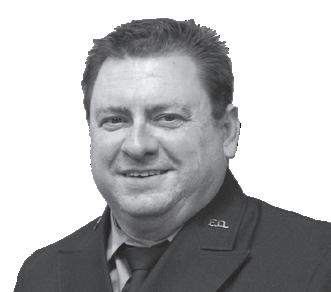
His program specifically trains those with prior experience with guns to become guardians. Without a proper background in guns, staff members are not eligible to become guardians. They must have basic or intermediate handgun experience and a valid license to carry in Texas, be a school staff member and shoot with 90 % proficiency.

The program puts staff members through 80 hours of training, much of which is shooting at targets in addition to simulation and scenario training

This scenario training is designed specifically to prepare guardians for the high stress threat of an active shooter in schools.
“After the guardians have had their training in the range, we go to a school and set up a school shooter situation,” Sellers said. “We use paintball rounds to imitate the bullets that come out of a real firearm.”
Sellers’ simulations, eight hours of strenuous training, take everything into account, from communication to ultimately taking the threat down. These situations, which consists of many rounds of .40 caliber paintballs, are designed to be as realistic as possible to make sure that guardians are prepared for the event of an active shooter.
“We don’t want the first time they’re in an active shooter situation to be a real incident,” Sellers said. “If they fail, it will be in training, and not in an actual situation.”
In addition to working well with firearms, mental toughness is also essential to success.
“We go over what it takes to go through something traumatic,” Sellers said. “Just the fact of being in a shooting is going to make your heart rate increase. There are so many physiological things that happen to our bodies.”
that the AFO’s 11 weeks of training and guardian program’s basic handgun training do not.
“These scenarios are really, really difficult, because you've got people that are either injured or killed, you've got people fleeing in all sorts of directions, and in the middle of all that you've got to try and identify who the aggressor is, in order to subdue and deal with them,” Faro said.
Faro’s study found that despite increased heart rate, an indicator of physiological arousal, during a stressful shooting test, the ARV officers were able to maintain accuracy. The AFO officers, however, had an almost 10% drop in accuracy. This is because the more-experienced ARV officers were able to ‘get in the zone’ and needed less cognitive resources to shoot the firearm. Thus, they could utilize those resources to deal with the anxiety of the stressful shooting test. This idea of utilizing less cognitive resources also comes up in the learning process.
“When you'd start learning to ride a bike, your mom or dad probably helped you out by holding the bike, allowing you to try and get the balance,” Faro said. “After a while, you think your mom and dad are running alongside you — and they are — but they're not actually holding the bike anymore. You’re actually doing it yourself. At which point you realize you’re unbalanced.”
Such a change of focus may cause the bike rider to fall over.
“That's the gray area because you actually can do it, but you're still having to concentrate on what's
FACTS & STATS
JEFF SELLERS Founder of Schools on Target
Recent research conducted by Jolyon Faro, a lecturer in policing at the University of Central Lancashire, on firearms officers in the UK has shown that under stress, more firearm training correlates with better performance. His study was done on 127 firearms officers in the UK, 47 of which were Armed Firearms Officers (AFO), who had 11 weeks of basic training and are comparable to patrol officers, and 80 were Armed Response Vehicle Officers (ARV), who had eight weeks of additional training and are comparable to SWAT. These eight additional weeks training six hours a day to progress form an AFO to ARV consist of stressful tactical scenarios, active engagement, and round after round of blank ammunition.
“A lot of that eight weeks is spent looking at people's ability to use force to be able to react in high stress situations and complex situations that have multidimensional issues,” Faro said.
Both this scenario training and the guardian program’s scenario training have an element of stress
70 14 22 16 8
hours of Texas License to Carry and DPS School Safety classes
hours of advanced hangun training
hours of scenario and situational training school districts with the guardian program implemented
PHOTO / COURTESY JEFF SELLERS PHOTO / COURTESY JOLYON FARO
happening,” Faro said. “As you move forward, it becomes almost second nature. That's where the autonomous phase comes in, since you can do it almost without thinking about it.”
But like riding a bike or any other skill, people learn how to shoot firearms at different paces. Some will do well with a certain training program — and others won’t. Guardian program included.
Whatever amount of preparation one does for any high stress situation, Faro believes, in the end, that it still all comes down to the individual.
“Most of the time, we will talk about fight, flight or freeze,” Faro said. “But actually, there’s a little bit that sits just before that. And that’s the startle reaction that has a real difference to how you will then move into the next phases.”
The startle reaction causes all to freeze at first, but some people have been naturally predisposed to staying in the startle reaction much longer than others, almost like a deer in the headlights.
“There's been a bit of research done on a school's police officer that froze at the door with an active shooter inside,” said Faro, who is currently pursuing a doctorate on this reaction. “He's just one of these individuals that are predisposed to freezing, as opposed to actually acting on his end.”

In their board meeting, Keller ISD trustee Ruthie Keyes and others denounced the ruling, arguing that the final decision did not support the majority opinion.
“When you have 848 responses who say no and 60 that say yes, I think that speaks loudly,” Keyes said, in an interview with WFAA.
And when it comes to defending our campus, Headmaster David Dini believes such a program will never be put in place.
“We have a very clear strategy around our team and a very clear and significant commitment to having uniformed officers and a highly experienced team,” Dini said. “Five of our security team members are veteran law enforcement officers. The guardian program’s just not the right approach for St. Mark’s.”
Senior George Genender would also not support the implementation of such a program.
“While I do feel like it's everyone's right to bear their own arms, I feel like school is a place that everyone
should be safe,” Genender said. “I feel like that impedes on my safety and comfortability. I don't think there should be guns at school.”
Former officers that are on the security team have the ability to carry firearms if they choose, but whether they do or not is not public information.
“We don't publicly communicate anything about whether or not one of our team members would be armed,” Dini said. “We do have a policy which allows for our security team members, if they're retired law enforcement personnel and in good standing, to carry a weapon.”
Public opinion surrounding the law is also generally negative. In a study done in 2019, professors Jagdish Khubchandani and James Price found that the guardians would not change much in the event of a shooting.
“Armed school personnel would have needed to be in the exact same spot in the school as the shooter to significantly reduce this level of trauma,” Khubchandani and Price wrote.
The law is also a point of concern for many parents and educators around the country. Educator Victor Cathey, father of three Marksmen, believes that teachers should be able to focus on their job.

“Teachers ought to be able to teach and worry about teaching,” Cathey said. “They shouldn’t have to worry
about where a gun is at the time of a shooting. If we remove the educator from education, then they aren’t going to be able to teach. They ought to be able to focus on the latest and greatest technology to help educate minds.”
Cathey argues that if faculty and staff carried guns, their priorities would also be different in active shooter situations.
“All of a sudden, they are now more concerned about taking out the individual shooter than protecting the student, and the number one responsibility of every educator should be student safety.” Cathey said. “The guns distract staff members from moving their kids to a lock down.”
In the end, Sellers also dislikes the idea of having guardians.
“I hate that we have to do this, but there really is no other solution,” Sellers said. “Our best answer is to have guardians on campus, and have school staff do what it takes to respond. We’ve seen too often that law enforcement doesn’t respond in time. This is a mitigation tool.”
Ultimately, Sellers attributes the root cause primarily to the person behind the trigger and scope, and he sees no other alternative to guns, arguing that it would be hard to stop someone with one without them.
“We owe it to the people that are going to be defending us to give them the tools that the enemy uses,” Sellers said. “You obviously can’t bring a knife to a gunfight.”
SCENARIOS An instructor for the Schools on Target program poses as a shooting threat. This is part of the program's required scenario training (top). A group of police officers tends to a wounded man. Such situations require a focused and stable mind.

“
Maintaining a reasonable level of health and fitness go a long way to being able to react well.JOLYON
FAROLecturer at the University of Central Lancashire JOLYON FARO Lecturer at the University of Cenral Lancashire PHOTO / COURTESY JOLYON FARO PHOTO / COURTESY JEFF SELLERS
Rethinking Energy


S
Almost exactly two years ago, a series of winter storms severely damaged Texas’ electrical infrastructure, and I found myself living in a new environment. I had to walk everywhere with a jacket, sweater and scarf, the day effectively ended at 6 p.m. unless I wanted to struggle to work by candlelight, and there wasn’t much in the form of entertainment.
When it was finally over, I couldn’t wait to do all of the things I took for granted just a week earlier — not having to worry about my phone’s battery, taking a hot shower and, perhaps a bit ironically, being able to do my homework. The storms and power outages were a symptom of a larger problem: Arctic climate change.
When temperatures in the Arctic increase, they grow increasingly closer to the temperatures in the tropics. This weakens the polar jet stream, which depends on temperature differences between the Arctic and tropics to drive its movement. Finally, the weakened jet stream, like a top whose spin has slowed down, begins to destabilize, causing it to drift eastward.
Even though Arctic temperatures are rising, they don’t quite explain what happened in Texas two years ago. The Arctic jet stream drift likely combined with a polar vortex, another mass of cold air from the North Pole that drifted southward. As it passed through layers of warmer air in Canada and the United States, this vortex caused air pressure and temperature to plummet. As this variant-pressure vortex began to migrate southward, it also brought with it an increased carrying capacity for water in the air. This vortex was likely responsible for the “heavy” snowfall that ultimately damaged electrical infrastructure.
LIGHT For the first time in human history, more energy has been generated from nuclear fission than what was put in, potentially revolutionizing the way we power our world.
PHYSICS OLYMPIAD
The Annual Physics Olympiad exam will take place in the Graduate Hall Feb. 19, with 64 students, including eighth graders and seniors. To proceed to the next round, students must answer approximately 64 percent of the questions correctly, which will lead them to a semifinal national round of 350 contestants.
Members of the Physics Club practice every Thursday in preparation for the Olympiad.
WINTER WEATHER
Despite relatively pleasant weather to begin the year, Dallas’ power grid is still at risk of major collapse in the event of extreme weather. After experiencing back-to-back years with extremely cold temperatures and ice storms in February, the state has made minor changes to the protections of the power grid, but residents should still have access to a secondary source of power in the
STEM THIS PAGE
PHOTO / CREATIVE COMMONS 08 THE REMARKER FEBURARY 3, 2023 ENVIRONMENT
case of another winter storm.
STEM CONFERENCE
The 10th annual STEM Conference will take place on Friday, March 3. The main focus this year will be “Ethics in STEM” with highly accomplished workers in the STEM field such as Andrew Gatherer, Veljko Dubljevic, Sara Ord and Stacy Pritt as the speakers to educate students to see the value in identifying the ethical implications of scientific advancements and inspire students to explore the STEM field. This year’s sponsor, physics teacher Fletcher Carron, will be helping to coordinate with teachers to organize the speakers into classes.
VIRTUAL REALITY IN CLASS
As technology progresses, virtual reality has become an important part of humanities instructor Jason Lange’s classes. He began using virtual reality in September to help
Tomorrow I predict the high will be in the 80s with the low coming in at mid 60s. Very high probability of rain.
his students travel to historical places throughout history. In addition, during Grandparents’ Day, Lange displayed the progress of technology thoughout generations. Other humanities teachers have also began to consider using virtual reality to supplement study.
STEM LAYOFFS Tens of thousands of employees in the technology industry have been the victims of layoffs in recent months. Companies such as Microsoft and Amazon have recently eliminated a combined 28,000 employees. Social media giant Meta has set out to layoff nearly 13 percent of their staff, while Twitter has massively downsized their workforce since Elon Musk’s takeover. In addition, large cryptocurrency corporations have taken significant losses due to the fall of FTX.

INSIDE
09 Nuclear fission
Under Winter Storm Warning
Number of States Affected
Potential Snow Fall
Snowfall Rate

Average Temperature
People without power
SOURCE / Woods USA Today
18.5 Million people
Nine states
11 inches of snow
One inch per hour
Below 32 degrees
100,000
December Sadly, my prediction of a white Christmas was wrong, but it almost happened. I predict that sometime this month, we will see the snow that we missed at Christmas, and I will be doing my snow dance for it.
Sunday Cold front comes in, high is 60s, and the low is 40s. Cold front will bring lots of rain and humidity.
Monday Front blows through, so higher temperatures with a high at 70 and a low of 63. Very likely to sleet or snow.
CONTINUED
POWERING
The support structure focuses on connecting the main
Robotics student wins several awards
“I’ve participated in the Boosting Engineering Science and Technology (BEST) robotics, FIRST Tech Challenge, and FIRST Robotics,” Patel said. “I used to do FIRST Lego League (FLL) like when I was a little kid, but that was like very informal.”
The robotics team recently won BEST’s state championship, and Technical Difficulties placed top in the nation. However, for Patel, robotics is less about the awards and more about creativity and innovation.
unior Vivek Patel is a part of the robotics team as well as Team 7172, Technical Difficulties, both of which have won highly esteemed awards in the state and nationwide.VIVEK PATELThe island of Eniwetok Atoll is silent. No trees swaying in the breeze. No waves lapping against the shore.
No animals scurrying along the sandy terrain under the palm trees.
The only sound is that of a faint countdown and a sense of foreboding damnation.
Moments later the first hydrogen bomb blooms into life, and with it a picturesque scene of hell on Earth. Nuclear fission had been achieved.
Seventy years later, the power used to destroy may have finally been harnessed for creation. Researchers at the Lawrence Livermore National Laboratory’s National Ignition Facility in Livermore, CA, have gained more energy from a nuclear fission reaction than initially put in.


“They have a facility that takes 192 lasers,” chemistry instructor Ken Owens ’89 said, “and they point it all at a pellet about the size of a match head. The energy of the lasers vaporizes the pellet’s shell and starts up a fusion reaction of the fuel inside the target.”
The required amount of energy needed to ignite the reaction was the main roadblock facing the researchers.
“The temperature in the pellet is pushing 100 million Kelvin,” Owens said. “So you are using a lot of energy just to get everything hot, and being able to get more energy out than going in means they figured out a way to move ahead in the research in a way nobody else has.”
The amount of energy needed to perform this reaction is so great that the lasers can only fire once a day.
“Part of that is they have to charge up the capacitors,” Owens said. “And not all the energy they put into the lasers comes out as laser light. There’s a lot of energy lost along the way.”
Due to the amount of time required to charge, the laser method of sparking an ignition does not lend itself well to commercial purposes.
“At this point, you could do no more than boil a couple of pots of coffee,” Owens said. “But it’s the first time we’ve gotten more energy out of fusion than what we put it in, which is a big deal.”
If researchers can develop a method to replicate this process commercially, it is
PHOTOS / COURTESY LAWRENCE LIVERMORE NATIONAL LABORATORYMIRRORED After being cleaned, the National Ignition Facility’s optics are ready to be used to help target and focus the lasers on a focal point.
nearly guaranteed that traditional methods of generating energy, such as oil and gas, will become obsolete.
“You get so much more energy per gram of fuel that stepping away from the older, traditional fossil-burning fuel sources would not be a question,” Owens said.
In addition to being vastly cheaper, energy generated by nuclear fission is entirely green.
“There’s no pile of nasty stuff that somebody can come in and make into a dirty bomb or dispose of improperly and destroy a river,” Owens said.
Despite being optimistic about future developments, Director of Environmental Studies Dan Northcut ‘87 believes that a more realistic approach is needed to combat climate change.
“We definitely hope that fusion makes progress,” Northcut said, “because that would be the pie in the sky. But if it didn’t, I would still advocate for increasing our regular nuclear power over burning more coal.”
Contrary to the Hollywood myth, nuclear power plants are not that dangerous.
“People are afraid of nuclear accidents,” Northcut said. “But generally speaking, we’ve had over 100 nuclear power plants going in the US for decades.”
Northcut believes that the need for a new source of energy grows dire.
“We had cheap energy for the whole 20th century,” Northcut said. “So we’re addicted to easy, cheap energy. And now we’re running out of the easy, cheap energy.”
Unfortunately, nearly every source of
energy comes with drawbacks.
“[Fission reaction] produces neutrons which magnets can’t stop,” Owens said. “Any of the neutrons that hit metal that make up the machine will start to change the atoms of the metal, which means over time, you have to replace all of those parts. That’s a problem because you have to basically rebuild the thing every few years or parts of it every few years.”
That is not the only problem facing the new source of energy.
“It’s an engineering question,” Owens said, “not a physics question. It’s just a question of building more stuff. If they do have the basic question solved, now they just have to find ways to build it up. That is not trivial. That is going to be a difficult challenge.”
The reaction is currently driven by using tritium, a hydrogen isotope, as fuel.
“The reaction they chose is between deuterium and tritium because it happens at a lower temperature than most of the other hydrogen fusion reactions,” Owens said. “So it’s easier to get to that temperature.”
Tritium is quite scarce, making the usage of alternative fuel sources desireable.
“If they get to the point where they can use just deuterium, which requires a higher operating temperature,” Owens said, “then all you have to do is electrolyze water and extract the deuterium. How much water is there on the planet? We’d have have fuel forever. By the time we run out of deuterium in the waters of the Earth we’d probably already be in space.”
“I haven’t been doing it for too long,” Patel said. “I just started building basic things using pretty basic parts. Then, I started using the software and that’s where I really took off with robotics. I would spend hours, just designing things, getting practice.”
CAD, or computer-aided design, is software that allows users to create 3D models using 2D sketches and extruding those drawings into 3D shapes.
“It is cool to have an idea in your head and be able to then take that from a sketch, or drawing to something in CAD software, to something you can actually build and assemble,” Patel said. “That’s really exciting to me and one of the best parts of robotics.”
Originally, he wanted to learn programming, but after visiting the Maker Space, he joined robotics and tried hardware.
“I came in the Maker Space and checked it out, and I realized it’s something I want to do,” Patel said. “I originally wanted to do programming. Coming into a bigger space, seeing all the programming with the robots, I thought that was a good opportunity.”
The Maker Space is home to several advanced machines, including 3D printers and milling machines.
“I saw people making some really crazy stuff out of the milling machine,” Patel said. “I could have an idea and bring it to fruition with all the machines there. It really interested me.”
Patel also has plans on continuing engineering after graduating.
“I’m still very interested in programming and computer science,” Patel said. “After my experience with robotics, and through all these robotics competitions, I’ve gained a lot of love for mechanical engineering.”
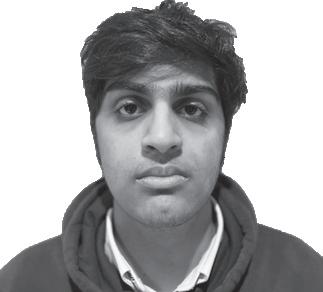
Thump.
Thump. Pause. Thump.
Eyes start turning to the group of five boisterous boys beating on the lunch table. People start giving looks.
“Here we go…”
They start rapping, but they don’t have a studio or a mic or any sort of fancy software. All they have is a table and their makeshift beats. But it’s enough to make the looks turn into smiles.
“I’ve always liked music and rhythm and seeing the happiness on people’s faces.”
At home, his garage was full of turn tables left behind from his dad’s days of DJ’ing in college. One day he was encouraged to turn the tables and go from playing with old equipment to starting his own business. And so he did on May 14, 1998. He was a sophomore in high school.
Then, his junior year, he got a gig with Texarkana High School for senior prom. His senior year, he DJ’d Blue and Gold Day for the first time — something he’d do again and again and again.
He got booked at DISD for party after party after party. He got community events, too. And, of course, he got lots of money. But most importantly, he got out of his shell.
“It’s hard for some people to believe, but I’m actually an extremely introverted person.”
Having to stand in front of people in a crowd and get comfortable really did force him to open up.
Even after they walked across the commencement stage, Marksmen on the Alumni Board strive to further the school’s legacy with the community long after they’ve left.

See coverage, page 13 10600 IN
UPCOMING COMMUNITY SERVICE DEADLINE
Feb. 6 is the second community service hours deadline. By next Monday, a total of 10 hours must be submitted by all Upper School students. This year, as community service hours are cumulative, they can be done anytime throughout the year. The next and final community service deadline of 15 hours will be April 10. If students have already completed 15 hours, they do not need to complete five more hours between Feb. 6 and April 10. Hours counted towards the President’s Volunteer Service Award are due on May 1.
LUNAR NEW YEAR CHAPEL The Lunar New Year chapel service took place Jan. 25 for the Upper School and Jan. 24 for the Middle School, another step in the Chapel Program’s mission to include all holiday ceremonies celebrated at the school and not solely the traditional
And seven years ago, he did just that with his business. After 20 years of DJ’ing, he opened up his services to the world of bounce houses. Since 2015, he’s acquired 24.
One day, after setting up a kid’s party like usual, he received a check. Like usual. But when he looked at the name, it looked a little too familiar: Tony Romo.
“I didn’t even know it was him.”
That was just one of the many orders he carries out on weekends — four on Saturday, sometimes two or three on Sunday. If it’s football season, he leaves film and goes straight to delivering bounce houses. It’s a lot of commitment.

And it’s why Korey Mack rides his bike to school. He's gotta stay in shape — bounce houses really are tough work.
Judeo-Christian holidays. The service included the traditional red envelopes and the story of the Zodiac Race. Chapel Council CoPresident Arjun Badi is excited about the added representation which continues this year with Ramadan and Hindu services upcoming.

ALUM NAMED TO FORBES 30
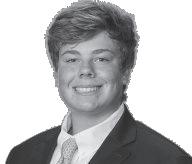

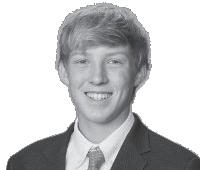
UNDER 30 Alums Jonathan Chen ‘11, Roland Salatino ‘12 and Aarav Chavda ’13 were named in Forbes 30
Under 30 list in 2023. The 30 Under 30 list is an annual recognition of 600 figures, with 30 people selected in twenty different categories, including music or art. Chen was featured in the Marketing and Advertising Category. He is the cofounder of Tijoh, a multidisciplinary company that manages seven brands digitally. Salatino and Chavda founded Inversa Leathers, which creates leather products from invasive species in coral reefs.
Quotes overheard around campus
NEW LIBRARY PUZZLES Teresa Katsulos and the library have brought in more puzzles for students to figure out. Located in the research room of the library, students can stop by to complete puzzles up to 1,000 pieces. The librarians believes that puzzles are a great way for students to invoke both the left and right side of their brain and hope to continue bringing in more and more puzzles for students to complete.
RETURNING MARKSMAN From Jan. 7 to Feb. 3, the school took part in the 17th annual Habitat for Humanity house build in collaboration with Hockaday. The house builds took place every Saturday over the course of the five weeks. Twelve students from each school participated each week, working to build a home for a family in Dallas in an underprivileged community. Participants spent over 22 hours working on the project.
Good golly gosh, I sure do love Sage chili!
ZACH OLYAN Junior
Sharang, you are idiot.
Junior Ethan Xavier explains what draws him to the world of arts.
Sixth grader Toby Hyun recently appeared in a baking competition.
10 11 12
Students and faculty alike share their beliefs on the impact of senior exhibitions.
WEEK
Sunday Evensong in the chapel @ 7 p.m.
Monday Community service deadline
Thursday Community service Austin Street Dinner
Friday Winter Break

Feb. 11 ACT (off-campus)
Feb. 13 Winter Break
Feb. 18 Habitat for Humanity House Build
Feb. 20-24 International Week
Feb. 22 PSAT for Sophomores
Feb. 22-24 Eighth grade campout
Feb. 23 Third grade Fine Arts Evening
Feb. 25 Habitat for Humanity House Build
Most haters are stuck in a poisonous mental prison of jealousy and self-doubt that blinds them to their own potential.
HEWES LANCE Freshman
Noah A. is a varsity academic athlete.
JOHN PERRYMAN History instructor
While sixth grader Toby Hyun's interest in cooking started as a side hobby, in the years since he started, it's led him on a journey involving national shows and even running his own business, Redbun Cooking.

Lights!
Sixth grader Toby Hyun waits expectantly, in Food Network’s expansive studio. In the room with him are his newfound rivals: 11 kids close to his age from across the country.

Camera!
Hyun felt the straps of his green apron brush against the back of his neck, looking over at the station where he would soon cook his meal to perfection.
Action!
At first, cooking had been a simple hobby for Hyun — a way to connect with his family or pass the time — but somehow, he had ended up here, at the Kids Baking Championship, where he would compete for a grand prize of $25,000. One thought consumed his mind:
Am I good enough to be here?
Hyun first started cooking under his nanny’s supervision when he lived in New York, allowing him to grasp the fundamentals of cooking, figure out his way around the kitchen and develop an interest in cooking.
“My nanny always let me help out — even if it was just dropping a dumpling in boiling water,” Hyun said. “She taught me a lot of stuff, like how to wrap a dumpling. The other front was mostly my mom showing me things and having me try them. A large portion of it was just trial and error.”
Hyun really started helping out around the kitchen when he was 5. From a young age, Hyun had always been passionate about cooking. In his free time, he would watch YouTube videos from cooking content creators like Joshua Weissman.
“At that time, I was more interested in cooking and knife skills, because that was when I was first allowed to use a knife,” Hyun said. “I looked on YouTube, and I watched knife carving videos, and that’s how I honed some of my skills. Eventually my mom started to help by asking me to help her with local bakes and potlucks, and that’s really how I started baking.”
Then, when the COVID-19 pandemic first hit, Hyun started his own baking business, redbun cooking [sic], to cure his boredom. “Red bun” translated directly to Chinese yields “hong bao,” which has another meaning: the moneyholding red envelopes distributed during Chinese New Year.
“It started when I was nine or ten
during the middle of 2020,” Hyun said. “My parents suggested I start a business. I mostly sold cookies, which I still do. Ever since then, I’ve been marketing and putting myself out there, which helped me get on the Kids Baking Championship.”
Hyun appeared as a competitor on season 11 of Food Network’s Kids Baking Championship, a reality TV show where 12 young chefs ages 10 to13 from all over the country compete to win $25,000. Although he didn’t win, he believes it was a great experience.
“My favorite part was probably being with the 11 other bakers,” Hyun said. “Before shoots, everyone was joking around and having fun, and that was really what I took away from it: the 11 other friends that I gained.”
Coming on to the show has also helped Hyun’s business.
“Well recently, being on Kids Baking Championship has resulted in me getting a lot of orders,” Hyun said.
Not only did he get more orders, but Hyun was also able to learn cooking lessons from his fellow cast members.
“A lot of other cast members were often like, ‘Here’s how you do this quicker, and here’s how to make everything efficient,’” Hyun said. “They were really helpful.”
Maintaining a baking business and appearing on TV shows can be a huge commitment, so Hyun has developed ways to manage both school and his work in the kitchen.
“I usually try to be as efficient as I can,” Hyun said. “I usually listen to podcasts or do homework while I'm baking or mixing batter. I also try to get my schoolwork done earlier so that I have free time to do cooking later.”
Even though baking keeps him busy, Hyun still loves doing it.
“Baking is really relaxing,” Hyun said. “If I ever just start making cookies, I get the end product, but I also get the entire process. I usually watch YouTube videos while doing it to keep myself entertained. It’s really fun until you start cleaning. Plus, it’s pretty cool to make dinner for your family.”
In the future, Hyun plans to continue baking and to grow his business further by reaching out to more people.
“I want to keep baking and putting myself out there more because currently, I stick to Mom’s friends,” Hyun said. “I definitely want to market my business around the Dallas area in the future. Time will tell, but hopefully, my business expands.”
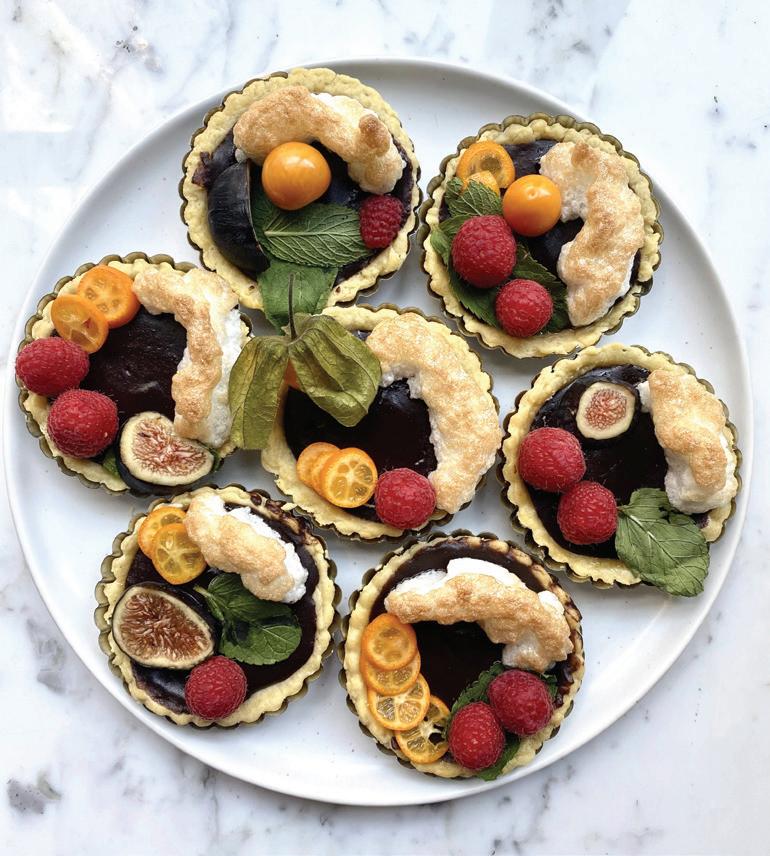
Sophomore Andrew Xuan, a Senior Master Sergeant at the Dallas Composite Squadron of the Civil Air Patrol (CAP), has an ambition — an ambition to be an astronaut.
After he heard Samuel Goldfarb’s ’20 senior exhibition about CAP as a seventh grader, he decided he would get more involved in pursuing that dream.
So he joined CAP’s Dallas Composite Squadron, which is split into groups of cadets called flights. The squadron meets near Love Field for two hours on Monday evenings at the Business Jet Center, where they do anything from aerospace education to drill.
“Drill gets very complicated,” Xuan said. “You start off with the in-place movements, so how to stand properly at attention, how to salute properly and how to face
Relations’
The Pride magazine will exhibit its first redesigned edition in March, receiving a long due overhaul under the new Director of Communications Ray Westbrook.
When Westbrook first came aboard in June in his new position, it immediately dawned on him that there had not been a refresh in the magazine in around 15 years.
“With so many parents, students and grandparents reading the magazine, we all agreed that it needed a reimagining,” Westbrook said.
However, Westbrook quickly realized why a redesign hadn’t happened yet.
“Once I got up here, I realized that there are so many things that are immediate and need immediate attention,” he said. “This has been an incredibly time-consuming project, so we had to wait for the best moment.”
Westbrook plans to implement many of the factors that led to his success in the journalism program in the new redesign of the magazine.
“We’ve set forth a pretty rigid but realistic deadline and production schedule,” Westbrook said. “I found that the team was very desirous of having structure and a plan to produce a page within a week or something like that.”
In terms of design choices, the magazine team consisting of visual expert Dave Carden, designers and writers Alex Hughes and Scott Moore along with Westbrook will completely revamp the formatting of the magazine.
“We’ve been producing stories, infographics and photos — the easy stuff,” Westbrook said. “Now, the more challenging part is going to be when we actually have to implement these new design strategies, fonts, margins and columns.”
in different directions properly. And then you move into marching, so how to move, and how you’re going to move as a flight, because there’s more than one way a flight can turn.”
And drill is not just useless marching.
“We do all this stuff because it teaches good attention to detail,” Xuan said. “Also, it’s good practice, because you need to pay close attention to detail while flying.”
However, CAP’s main emphasis is leadership, which is a part of almost everything there.
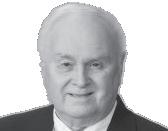
“There’s no other way to learn leadership, other than leading,” Xuan said.
In addition to leadership, aerospace and character tests, Cadets have to pass practical tests to advance to the next grade.
“For my first [practical test] as a a noncommissioned officer, I failed,” Xuan said. “The flight commander, testing officer, told me, ‘You need to speak louder. So when
I passed the second time, that was kind of a moment when I started to realize that this is going to be somewhere where I can grow.”
Although he’s learned a lot about growing as a person as well as flying at CAP, Xuan has not had the chance to fly yet.
“If you really want to learn to fly, you need to attend what they call a National Flight Academy,” Xuan said. “And it’s selective. There’s certain requirements that you have to meet first. And there they’ll teach you how to fly. And if the instructor thinks you’re ready, they’ll let you solo.”
Ultimately, coming out from CAP, Xuan hopes to become a better leader overall.
“I want to learn to be more confident,” Xuan said. “At the same time, I also want to see what really goes on behind the scenes for flying, and overall, just understanding how to achieve my goals, becoming an astronaut, and more importantly — becoming a good person.”
Despite all of the change, Westbrook plans on continuing to tell the “St. Mark’s story” to its primary audience – alumni.
“We asked ourselves, ‘If you were an alum, and if you’ve been away for 25 years, what would you want to know about the school,’” Westbrook said.
For many alums, the opportunity to return to campus often is inhibited by work, location or other factors, meaning many may lose sight of what is going on campus – the direct issue the magazine hopes to solve.
“It’s not so easy to come by every few months or even years,” Westbrook said, “and so we are really trying to bring them back home from wherever they are.”
ON SET As ‘Mateo’ in the television series “Whynauts,” Xavier taught various scientific topics through this medium of film.
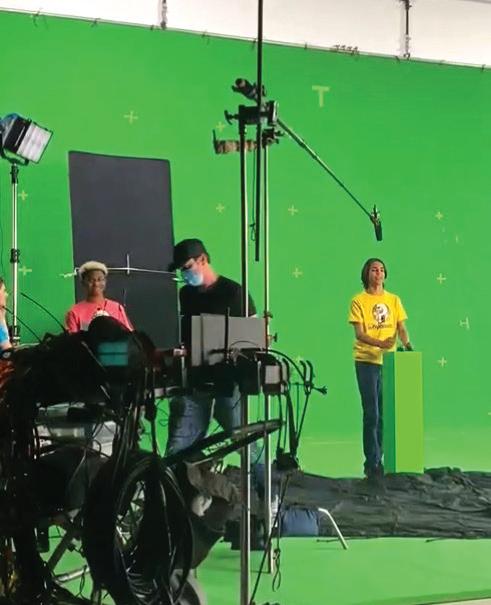
ARTISTIC
Junior Ethan Xavier has dabbled in the world of fine arts. He’s tried acting, painting and photography and has aspirations of experimenting with many different forms in the future. Through these experiences, he's found his professional and personal callings.
EXHIBITION
With the help of art teacher Katherine Wood, Xavier showcased his work with other Dallas high school artists Jan. 19-24 at the Blue Print Gallery.

From acting to painting to photography, junior Ethan Xavier is a connoisseur of the fine arts. His passion for creative hobbies extends far beyond the classroom, and it shows through his professional work and personal projects.
Xavier was first introduced to the arts, specifically acting, with an improv class he took almost a decade ago.

“When I was in second grade, I was living in Southlake, and I went with my best friend to an improv class,” Xavier said. “I did that for a year or two, and then I moved to Dallas. Once I moved to Dallas, I found a newer acting studio up in Lewisville, and that’s where I got my start. I’ve been there ever since, and I work there after school and over the summer.”
This acting studio, Cathryn Sullivan’s Acting for Film, has been the home of Xavier’s development as an actor through work and classes. According to him, his job is necessary because of how the acting program is structured.
“I’m an aide at the studio,” Xavier said. “There’s a master teacher who officiates, and each class has multiple levels. Because there are usually only one or two master teachers, it’s up to the aides to teach the specific levels within the class. That entails giving lectures and doing scenes with students — I mostly coach.”
Xavier often finds himself working with a range of
actors both young and old.
“We teach from ages 6 to 65, but it’s mostly child actors,” Xavier said. “There’s an eight-step level program that you go through, and that’s divided by level. Then once you become a master after those eight classes, you’re divided by your age: we have a middle school master, a high school master, 18 and over masters, and a premier class, which is where [Sullivan] handpicks her best 12 masters to be in the top class, which is what I’m in.”
To help practice skills learned in classes and help budding actors learn these new techniques, Xavier finds the teaching and coaching aspects to be most helpful.
“The fun part about it is that I get to take what I learned in premier class, which is where I am still actively learning in a classroom setting with other students and then apply that to the lower levels and all ages,” Xavier said.
Besides his job as a teacher, Xavier exercises his talent in his professional career. With only a few years under his belt, getting roles early on can be tough.
“I signed with the Kim Dawson Agency around 2019,” Xavier said. “With them, I booked commercial jobs and print jobs, which involve modeling and voiceover roles. Over the summer, I signed with Innovative Artists in LA, a top-five agency in LA. Things have been slow because of my age, but the first audition I got was actually for a lead role on a straight-to-series pilot TV show.”
This lead role was “Mateo” in “Whynauts,” a series of television episodes produced by the Perot Museum of Nature and Science to educate kids about various scientific topics.
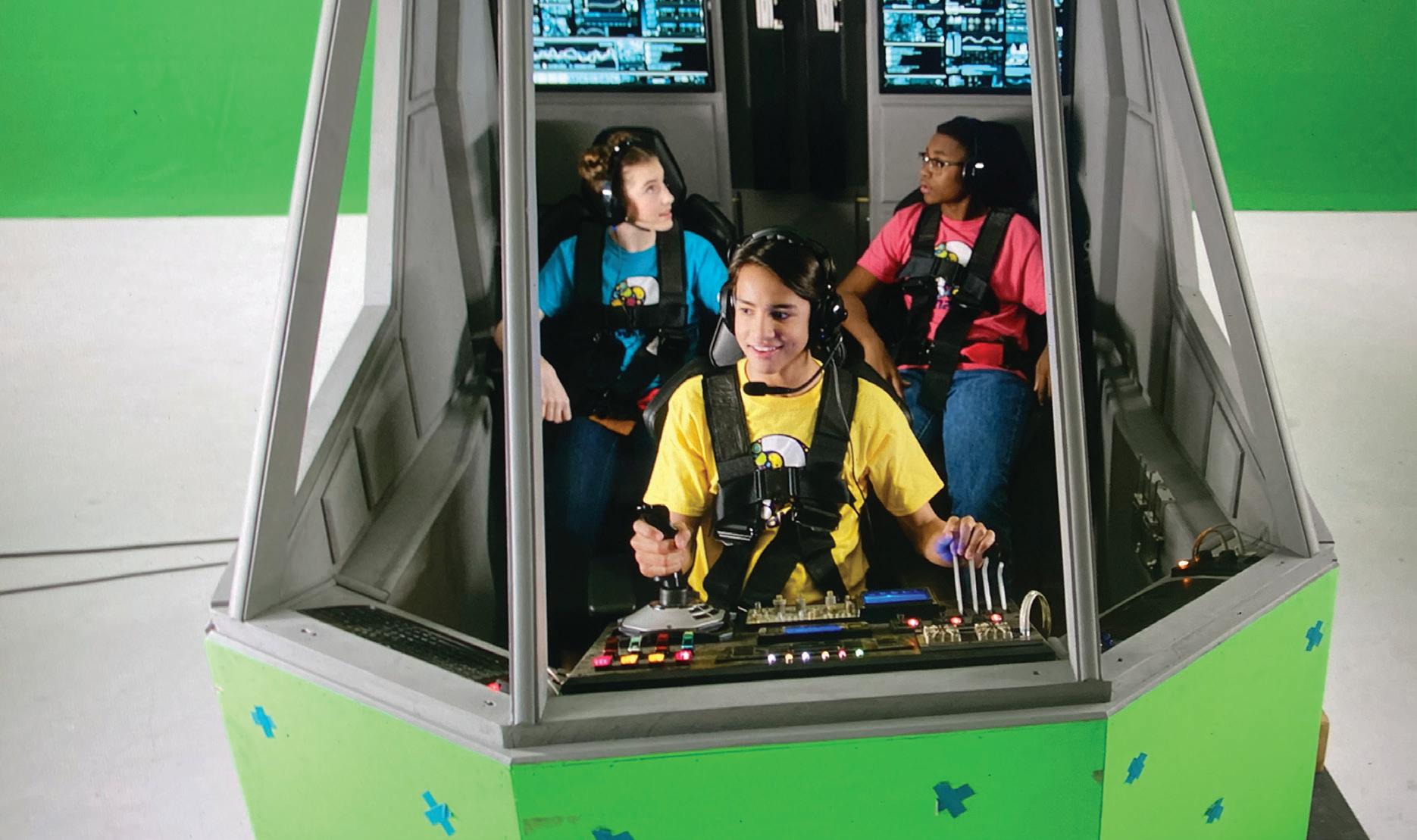
“The biggest project I’ve done was a TV show called ‘The Whynauts,’” Xavier said. “Because of COVID-19, the Perot Museum couldn’t do field trips and things like that, but they wanted to make an educational TV show for kids who speak both English and Spanish to be able to still learn about science. I was one of the six Whynauts, and we shot the TV show over the course of five or six months. I was in five episodes, and it was a whole lot of fun. I got a lot of on-set experience.”
When he’s not exploring the realm of acting, Xavier practices the medium of painting on a canvas here on campus. Compared to drama, painting is an entirely different practice that asks for a different side of him.
“Painting is a lot less collaborative, but it’s a lot more
personable,” Xavier said. “You’re much less focused on a group dynamic; instead, you’re more focused on yourself. So for me, it’s very therapeutic and almost a form of meditation. It’s very meditative being able to do something artistic without having to be around a lot of people.”
Xavier has been a part of the Drawing and Painting course since the eighth grade. Even though he finds it a smaller program, the class offers a curriculum that he adores, so much so that he spends weekends in the campus art studio finishing paintings and more. To showcase his work to the world, Xavier and two other juniors, Holden Browning and Preston Laird, participated in the Dallas Youth Artwork Exhibition Jan.19-24 at the Blue Print Gallery.
In addition to acting and painting, Xavier also enjoys taking photos of as much as possible, from “the mundane” to just reminders of the present.
“I love taking photos,” Xavier said. “Every month, I’ll make a recap video of every cool picture that I’ve taken as a fun way to track my progress as a person through photography. It also helps because I have a bad memory. Being able to take photos of things that I do and the people I’m with is like a digital log of my life.”
To Xavier, creativity and the arts have developed his personality and play essential roles in his daily life.
“The arts definitely helped my character development as a person a lot,” Xavier said. “It’s just so therapeutic for me, especially acting because I get to explore the psyche of different people, transforming into another person for the sake of entertainment. Painting allows me to explore my subconscious mind. Honestly, creating things that can be enjoyed by myself and others is my favorite thing.”
To others also hoping to explore the arts, Xavier leaves behind some words of wisdom.
“Consistency is key,” he said. “If you really want to get better at something, practicing it every day is such a great way to learn. Just observing and finding your own tastes is really important. And then once you’ve seen what you like in other people’s work, you can apply that to your own and give your unique take on it.”
And to those struggling with fitting arts into their lives, Xavier stakes his claim.
“If you were meant to be an artist, you would never be anything else, he said.”
Sophomore Aaron Schildkraut recently raised over $35,900 to go towards the Juvenile Diabetes Research Foundation (JDRF) in efforts to help fund diabetes research.
This fundraiser was part of a walk organized by the JDRF every year, and Schildkraut led the top fundraising team for the event.
said. “I wrote information about myself, the cause I was funding and the importance of the donations to achieving that cause.
As a result, hundreds of people were eager to help, and numerous donations were given.
Schildkraut struggles with Type 1 diabetes himself, making these donations even more meaningful to him.
AARON SCHILDKRAUT Sophomore
In order to raise the money, Schildkraut needed a way to alert the world to his mission — and what better way to do that than the internet.
“I started out by using social media to reach out to potential donors,” Schildkraut
“I wanted to raise money for this charity because I was diagnosed with diabetes almost two years ago, and this organization has really helped me since day one of having diabetes,” he said said.
Schildkraut hopes his efforts toward the cause will help current and future diabetes patients.
“I really support their cause, because they want to fund research for better ways of treating diabetes and even preventing or curing it,” he said said. “And, I would really
like to not have diabetes anymore.”
Schildkraut enjoys the aspects of helping others and is determined to lead the charge once again next year.
“I hope to continue to do this fundraiser,” he said said. “It’s a yearly event, and I hope to do this every year to hopefully raise as much money as possible.”
Though the results from this year’s walk were great, Schildkraut hopes to get an even bigger turn out at next year’s walk and spread the word about the importance of diabetes research.
“We were a little late to get the event onto the Community Service Board this year, but next year we will make sure to get the event up early onto the Community Service Board,” Schildkraut said. “So sign up for the JDRF walk next year, and tell as many other people as you can to do the same to help fight diabetes.”
CONTINUED FROM PAGE 9
Once a Marksman graduates, he joins the ranks of the thousands of those who have gone before him. Connecting them all is a behind-the-scenes work force — the Alumni Board.
Every day, at least 40 people are watching the school from afar. Sometimes, together in quarterly meetings. Other times, in committees for weekend events. But regardless of the occasion, they’re laying the bricks for future generations of students and preserving the legacy of the Alumni Board.
At its core, the Alumni Board aims to support the school behind the scenes with a mission statement of facilitating engagement and contribution from alumni across the globe.
“Essentially, the Alumni Board is a group of 40 volunteers — both local and regional, who are focused on advancing the school’s mission through their community engagement and philanthropic support,” Director of Alumni Relations Alex Eshelbrenner ’04 said.
President of the Alumni Board Sandy Campbell ’76 describes the board’s function as necessary and an impetus for alumni participation.
“The Alumni Board has eight committees, each of which is chaired by a member of the Alumni Board,” Campbell said. “These committees work closely with Alex Eshelbrenner and his incredible team in the Development Office to, among other things, spearhead alumni participation in the St. Mark’s Fund and select the recipients of awards such as the annual Alumni Awards, the Rogers Award and the newly-created Lee S. Smith ’65 Courage & Honor Award. The committees also organize and host alumni events such as Alumni Weekend and interact with both current and graduated Marksmen through the Board’s Mentor and Networking Committee.”
Accounting for the diversity of alumni and students, the Alumni Board’s members come from unique and varied backgrounds.
“The Alumni Board includes volunteers from across the decades,” Eshelbrenner said. “The oldest member is from the Class of 1968, and our
The Alumni Board has an executive member in charge of heading each of the board’s eight committees. To facilitate increased alumni participation, certain comittees are tasked with organizing events, both on and off campus throughout the year, such as the Alumni Golf Tournament, Alumni Weeekend and the sports matches between alumni and current members of the soccer team, basketball team and water polo team. For the 2022-2023 school year, the games were held on the first week of Christmas break.
youngest is from the Class of 2012. There’s also going to be a female member this year. To me, it’s really cool that we’ve got folks spanning from every decade because we know that our young alums are important. And we know that our older alums are also equally important to make sure we have voices spanning every age group because they might have different views. Really, the premise is to embody the school and have [the board] represent the voices that are a part of our St. Mark’s community.”
To better understand the community, Alumni Board members consistently keep in touch with events on campus.

“[The board] meets four times a year, and as a part of that, they learn information about different issues related to the school,” Eshelbrenner said. “For instance, their next meeting coming up in February will focus on admissions
and financial aid, and in the meeting before that, they got a closer look at campus security. The idea of these meetings isn’t necessarily to solve the issues that we’re talking about, but instead it’s to make sure that [alums] are as informed as possible, so they can go out and be really great ambassadors for the school. It’s kind of taking a closer peek behind the curtain and allowing them to answer questions and talk about some of these important issues coming down the pipe.”
Every year, a select few distinguished alums are handpicked by members of the Nominating Committee to serve on the board.
“[The Nominating Committee] is tasked with selecting five or six highly engaged alums to be nominated for election to the board,” Campbell said. “One of the core values of the Alumni Association, which the board is the governing body of, is “fostering diversity and inclusion,” and that is a key consideration in our selection process.”
While they don’t often take center stage, the Alumni Board is one of Eshelbrenner’s favorite organizations in the community.


One of the many events the Alumni Board organizes is College-Age Marksmen Day, which occurred Jan. 5. Working with the Student Alumni Association, College-Age Marksmen Day was an opportunity for young alumni to attend panel discussions with older, established alumni mentors and to share college experiences with Upper School students. It also allowed recent graduates to reconnect with classmates and teachers.
Panelist Parker Davis ’19 saw the event as an excellent way to spread his knowledge.
“I think it’s a great experience, and I was able to share what I’ve learned from my time in college so far,” Davis said. “I thought it was nice to come back and give the advice I’d want when I was in Upper School.”
Panelist Taylor Hopkin ’20 noted that returning to campus was a bittersweet reunion.
“A lot of my have teachers left,” Hopkin said, “but a lot of the teachers that were staples of my St. Mark’s experience are still there. All in all, it was great to be back.”
“To me, what’s special is that, as you guys are in school on a given day, there are alums from across the country that are working on your behalf,” Eshelbrenner said. “Whether that’s known or unknown, the fact is that it happens because the Alumni Board believes in you all. In many ways they’re silent investors in your future. They care and support you guys, and they’re eager for every student to not only join their ranks, but hopefully one day continue to do that same work on behalf of guys that will follow in your footsteps.”
STORY Zack Goforth, Aaron LiuIt seems that language bots still have something to learn about journalistic neutrality. Why don’t we do a little better?
In a world where technology is advancing at a rapid pace, ChatGPT stands out as a true marvel of innovation. Developed by OpenAI, this cuttingedge language generation model has the ability to understand and respond to natural language inputs in a way that is nothing short of mind-blowing. As we delve deeper into the capabilities of ChatGPT, we can't help but wonder: what other boundaries will it break?
The above passage was written by OpenAI’s ChatGPT-3, one of several publicly accessible machine learning-based “chatbot” algorithms that take user-generated inputs and give unique responses in human language. This most recent generation of language bots is not the first of its kind, but their ability to imitate human speech — along with the recent related phenomenon of AI-generated art — seems to have reached a critical point that has left many shellshocked.

These algorithms, however, represent more than just a novelty for onlookers to gawk at. Many wonder what kind of tasks they stand to automate, while others worry what kind of workers they threaten to displace. The bot got one thing right — we can't help but wonder: what other boundaries will it break?
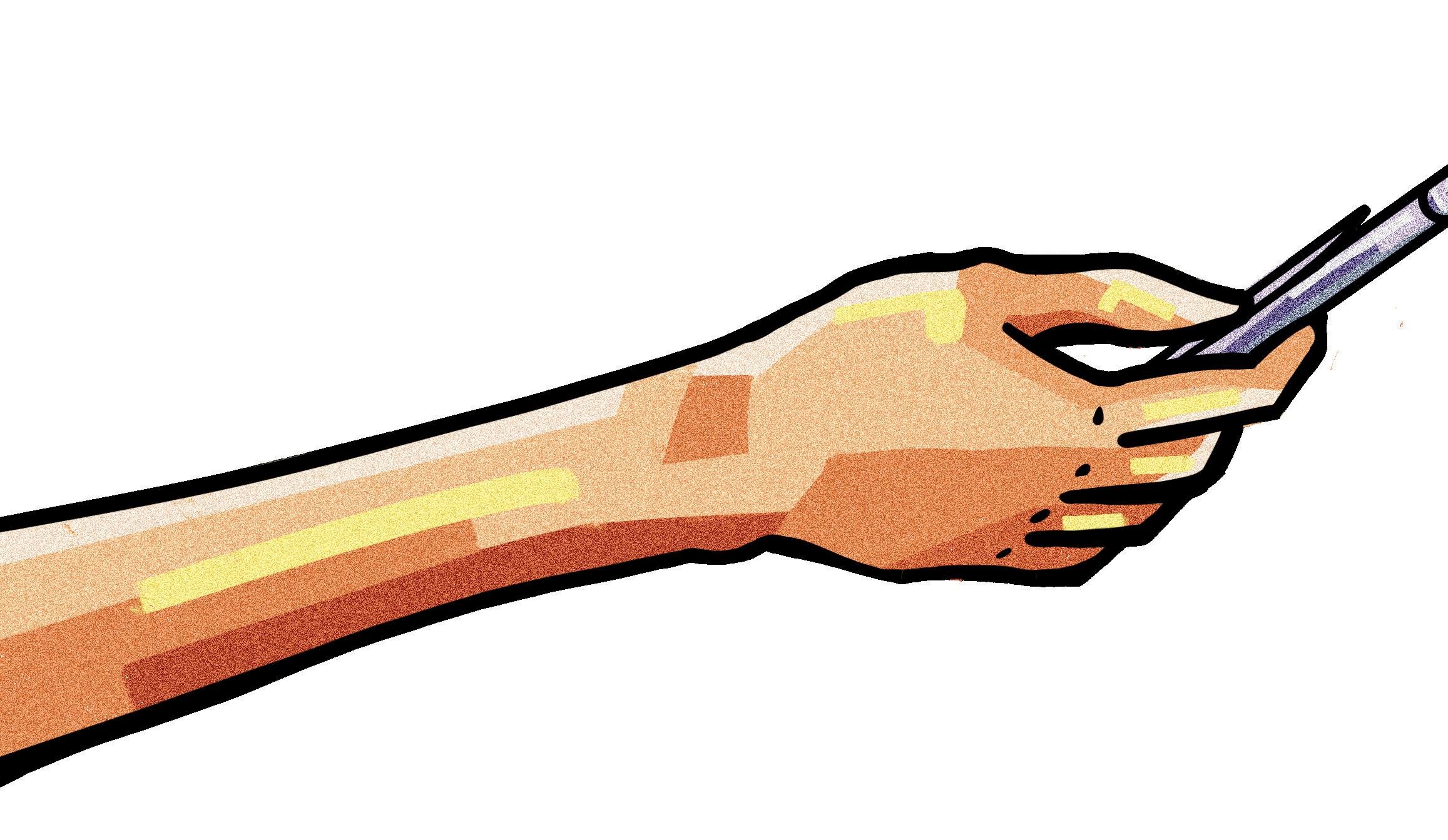
ChatGPT and similar tools threaten major changes to many fields, but the changes most imminent to St. Mark’s are those that pertain to education. For the first time, subjects like English and history — which previously enjoyed relative immunity from cheating thanks to anti-plagiarism tools like Turnitin — are facing the threat of computergenerated writing manufactured by tools like ChatGPT.
“When the [ChatGPT] news first broke, we started sharing a lot of articles within the English Department,” English Department Head Michael Morris said. “It’s been very much on our radar. We’ve had a meeting with the technology folks and talked about possibilities for how we could handle this, and I’ve talked to some Middle School teachers about it as well.”
Though AI-generated writing poses a practical obstacle for English teachers, it also poses the more fundamental question of why schools compel students to write in the first place. While some may dispute the usefulness of manually performing a task that can be accomplished automatically, English instructor GayMarie Vaughan maintains that such manual writing is inherently constructive.

“When you have an opportunity to speak your voice or put your stamp on something,” Vaughan said, “why would you have somebody else generate your own thoughts?”
Immediately after the release of ChatGPT, Vaughan brought up the topic in her English-10 class. In their discussion, they experimented with the program by asking it to respond to the same Macbeth essay prompt they had been given. Vaughan’s major takeaway was that writing meaningful essays on important topics is too important of a task to outsource to a machine.
“That’s when we pulled back and asked some of the bigger questions,” Vaughan said. “I don’t think I would want a machine to answer for me something as significant as what it means to be a good man.”
Despite the fuss caused by ChatGPT’s release, Morris asserts the advancement of chatbots will not fundamentally change the structure of English education at the school.
“I would say any department changes would be relatively minor,” Morris said. “I don’t see us changing our focus [away from writing]. I think we may adjust the tools we have students use for writing, and we could even use AI as a teaching tool. There will probably be more in-class writing and some adjustments to our writing policy and expectations, but I
wouldn’t expect major changes. We still believe in the essence of all that we do.”

For a school sworn to keep plagiarism out of its classrooms, the principle of never turning in someone else’s work has until now been synonymous with exclusively turning in one’s own work. However, with the advent of ChatGTP, a third option arises — turning in something that is neither one’s own work nor another’s.
“I think the subtle change in language for future years wouldn’t be to ‘not borrow somebody else’s language,’ because what’s unique about ChatGPT — it is original language,” Morris said. “The principle hasn’t changed — in essence, it needs to be your work and not something a computer or a tutor or whoever else generated for you.”
Though the problems created by ChatGPT might seem completely unprecedented, Morris suggests that we can learn from a similar situation in the past.
“I’ve heard people compare this situation to when the calculator was invented,” Morris said. “A lot of math teachers back then probably thought, ‘What are we going to do about this little thing that does everything for you?’ Things have always changed, and this is an interesting time where we’re having to anticipate that change.”
In addition, Vaughan predicts that writing done by ChatGPT will not be nearly as undetectable as its users might hope.
“When we have kids write a lot in class, we start to see a student’s style,” Vaughan said. “Then, when you look at [work done by] ChatGPT, it’s not the same. We could say [to a suspicious essay], ‘Where did this come from? This is pretty generic.’”
Instead of seeing ChatGPT as something for English teachers to contend with for the foreseeable future, Morris hopes that language engines can be used to complement English education.
“What I’m hoping we can do with ChatGPT is manage the academic dishonesty issue it presents but also embrace its potential as a teaching tool,” Morris said, “just as the calculator became a tool in math classes.”
In the best case, the program could even serve as an opportunity to transform English at St. Mark’s for the better.
“We really believe in the power of writing and what it means to your ability to think and express yourself,” Morris said. “I wouldn't want writing to disappear, but I would definitely want it to be enhanced by this.”
THE FIRST CONTESTANT
To Morris, this essay was stylistically polished but mechanical in tone.
For ninth-grade English teachers, a too-perfect essay might be somewhat off-putting.

(IN)AUTHENTIC Rife with stylistic errors but personable in tone, Morris senses essay No. 2 feels rights at home with other ninth-grade essays.
In 1950, Alan Turing, the father of computer science, proposed a method for determing true artificial intelligence: the Turing Test. In this test, an impartial observer would attempt to distinguish between the writing of a robot and the writing of a human. To see whether ChatGPT passes the Turing Test, we took two essays on the same topic: the first was written by a ReMarker staffer when he was a freshman, and the second was written by ChatGPT-3. After being anonymized, both essays were presented to English Department Head Michael Morris, who was tasked with grading both essays and distinguishing one from the other. Here are the results.
In order to circumvent the complexities of producing a new and authentic human-written essay, The ReMarker instead opted to pull an essay written by a staff member when he was a freshman. The topic was literary motifs in Sandra Cisneros’s The House on Mango Street.

“I tried to look for what was typical of a ninth-grade voice and writing style,” Morris said.
As Morris read over the two essays, he began to characterize each one by their writing styles. He noticed that essay No. 1 had a habit of repeatedly using the same phrases, but this alone wasn’t enough to dictate his decision.
“There was a fair amount of redundancy especially on this phrase: ‘throughout the book,’” Morris said. “It appears five times on the first page. That seemed a little generic.”
One thing that helped Morris parse one from the other was his experience as an English teacher. As a teacher at St. Mark’s, Morris was familiar with the kind of topics that teachers at the school go over when discussing the book, which would likely influence a student-written essay.
“This student would be responding to the specific expectations of the teacher from the assignment and from class discussions,” Morris said. “As the teacher, you’re looking for evidence of that in the writing.”
Morris indicates that, in a real situation, it would likely be even more difficult for a student to pass off an AI-written essay as authentic due to the familiarity of the teacher with the student’s writing style.
“One aspect of the conversation is that, at St. Mark’s, we pride ourselves on the teacher getting to know the student and his writing so that we can understand what his writing looks like and what his writing issues are,” Morris said.
Additionally, Morris noticed that essay No. 2 contained a greater number of stylistic errors. Essay No. 1, on the other hand, was nearly free of mechanical issues, but it was boring and lifeless in its writing style — robotic.
“One looks like more of a ninth-grade paper — partly because there are more issues to address here,” Morris said. “You could say [the other] is cleaner, but it’s cleaner in a more sanitized way. It’s not a compelling kind of ‘cleaner.’”
By this point in the interview, Morris was so sure of his decision that he began referring to essay No. 1 as the ChatGPT essay. For Morris, the final nail in the coffin was essay No. 1’s uncanny inclusion of the last name of the book’s main character, Esperanza.
“In this Chat[GPT] essay, Esperanza’s last name comes up in the introduction,” Morris said. “I’ve taught the novel a few times, and I don’t remember ever talking about her last name, or even where it might be in the text. I noticed that it was on the back cover of the book, which I would think would be the kind of thing that a bot would access.”
Acknowledging the limitations of the experiment, Morris asserts that, in a real-life scenario, he might not be so willing to jump to conclusions about an essay’s authenticity.
“It’s sort of an artificial situation because I knew one of them wasn’t authentic,” Morris said. “If I didn’t know that, it might have been harder to say ‘This one’s not authentic.’”
The grand reveal? Morris was correct. Essay No. 2 was authentic, and essay No. 1 was not. It seems that English teachers still have some time to breathe before, inevitably, technology advances.
To view the two essays compared in this experiment, scan this QR code.
BY Shreyan Daulat, Aaron AugustineArtificial intelligence is referred to by many as a “killer” of jobs — the World Economic Forum believes that as many as 17 million jobs in manufacturing, the industrial sector and healthcare have been lost. But for some — like Dr. Amit Mirchandani, father of first grader Krish Mirchandani — this loss is just something we’ll have to endure. Mirchandani, medical director of SEVA Medical Care, sees AI’s seemingly greater efficiency and consistency as an advantage we must utilize right away and in the foreseeable future.
“Medicine is quite fragmented in many ways,” Mirchandani said. “Two different doctors can have two different approaches. Two different radiologists can read X-rays two different ways. Two different tests can be interpreted in two different ways. The main thing is that AI is able to replace human variation and allow for more objective and consistent outcomes.”
And beyond those benefits, the time and manual labor saved through technology is vast.
“I was able to produce massive amounts of content, research and even references within a day,” Mirchandani said.
Mirchandani believes that AI is just another development in the history of human innovation.
“We didn’t eliminate cars to preserve horses; we didn’t eliminate type computers to protect typists,” Mirchandani said. “We just pivot to new roles.”
Especially for older generations, AI may seem too new to be a real concern. But take one sweep around the internet, and countless sources will tell you that learning this technology is necessary for success in many fields. For example, Mark Cuban, billionaire entrepreneur and father of seventh grader Jake Cuban, has repeatedly and clearly stated his case on AI in business.
AMIT MIRCHANDANI SEVA Medical Care medical director
“There are two types of companies: those who are great at AI and everybody else,” Cuban said on The Colin Cowherd Podcast in March of 2022. “You don’t necessarily have to be great at AI to start a company, but at some point, you’re going to have to understand it. It’s just like the early days of PCs. You didn’t have to be good at PCs, but it helped. Then networks, then the internet, then mobile.”
Though it’s already taken jobs, AI might be a “creator” as well. With this logic, it’s only a matter of time before people become as familiar with AI programs as they are now with handheld devices and computers. Cuban has been working to accelerate this familiarity to the younger generation through his “AI Bootcamps,” which provide high schoolers with a convenient way to learn the technology.
“If your company is not there, I guarantee you, there is a 14-year-old somewhere sitting in front of their PC writing code to integrate with ChatGPT who’s laughing at you,” Cuban said at the annual Dallas Regional Chamber keynote in January.
Per Mirchandani, AI will pose challenges for those who are displaced from jobs, but the solution wouldn’t be to dampen innovation for the sake of preserving human jobs.
“We’ll have to pivot. We’ll have to find new value. We’ll have to make sure that we can interact with technology in a way that is purposeful. Otherwise, we may miss out on really positive solutions to major problems that can make our world a better place.”
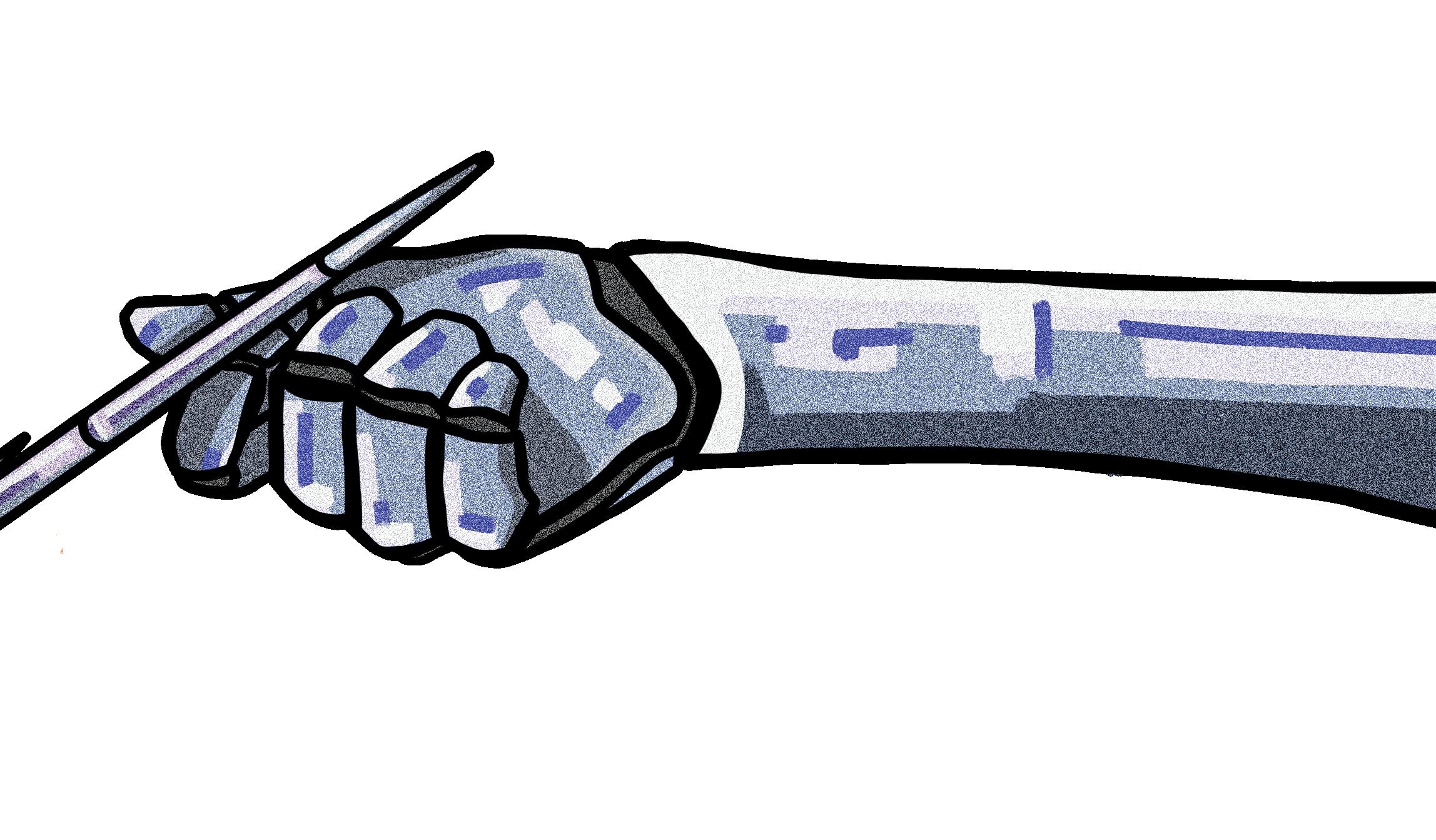
intelligence: a killer of white collar jobs, or a creator?
Hear from one of the creators of the latest art featured around campus.
INTERVIEW Aaron Liu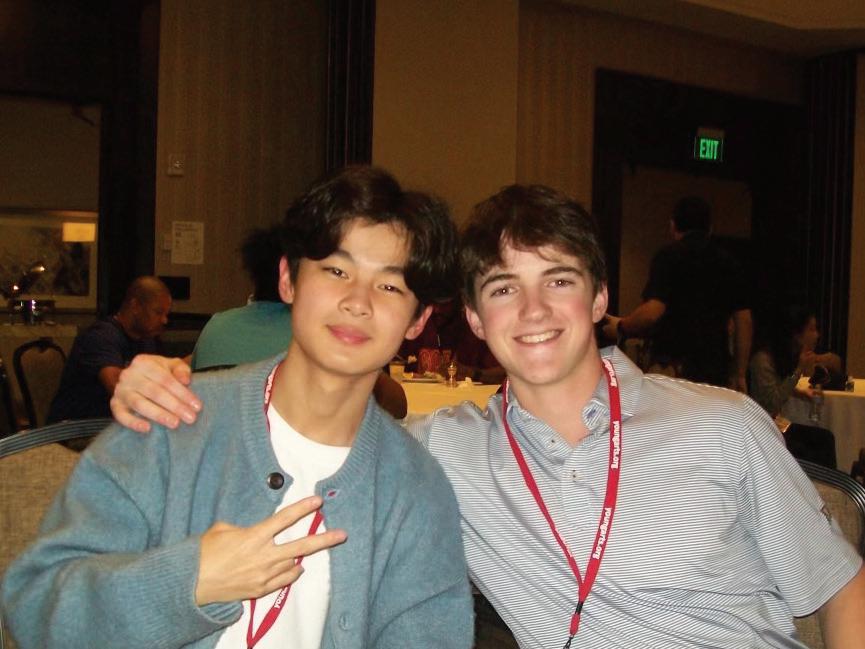
After compiling photos for their portfolios as part of the YoungArts competition, four seniors won awards from the National Foundation for the Advancement of Artists.
See coverage, page 18
What went into the making of this drawing?
Carson Bosita: This was made under three-quarter lighting to study the logic of light. I felt drawn to this composition because of how much the gorilla seemed to pop out due to its high contrast.

What was the hardest part to draw?
CB: Learning to see the subtle shifts in light and shadow was especially challenging. Because so much of art is figuring out how to express what you see, adapting my vision took some work.
ADDAMS FAMILY MUSICAL The Addams Family musical will be held March 3 on the Ed Long Stage at Hockaday. Students from both St. Mark’s and Hockaday will perform live starting at 7:30 p.m. Tickets will be available for purchase two weeks prior to the show. The Addams Family the last musical Hockaday will be hosting this year, was chosen because of its uplifting theme nature.
CHINESE NEW YEAR The annual
What technique did you use in this drawing?
CB: This linear perspective is taken from our family’s kitchen, facing the pantry. The low angle really emphasizes how different things can seem depending on the perspective height.

Chincse New Year celebration was held on Jan. 26. The pep rally included a lion dance performed by six seniors: Aadi Khasgiwala, Akash Raghunathan, Branden Song, Jonah Perez, Rishab Siddamshetty and Tommy Zheng, who were taught by professional instructors. There were also several other activities, including Chinese yoyo presentations and a Bian Lian, or face changing, show.
FILM STUDIES The Film Studies class has been working on a new film, as well as editing their short film ‘Til Death. The new film was shot over Christmas break and featured hired actors. The Advanced Film class has been using new, professionallevel technology including better floodlights to improve lighting quality. They have acquired a new microphone system, which separates different microphones into four channels, which will be supplemented with better cameras.
CERAMICS COMPETITIONS
Before the holiday break, Upper School ceramics students finished their pieces, with seniors Noah Norton and Henry Baxter as well as sophomore Hans Hesse applying to the Scholastic Art & Writing Competition. This is the first time students have applied to
Upcoming events worth checking out.

WHEN Feb. 4 @ 7 p.m.
WHERE House of Blues Dallas
Scholastic, which is a regional fine arts competition that feeds into a national competition wiht final results in March. The deadline for the National Council on Education for the Ceramic Arts (NCECA) Ceramics Festival was Jan. 11, and nine Upper School students applied with various pieces. The deadline for the Young American Talent Show at Booker T. Washington High School is Feb. 24.
FINE ARTS ALL-STATE RESULTS
The Texas Private School Music Educators Association (TPSMEA) All-State event took place Jan. 26 to Jan. 28. In Upper School Orchestra, four seniors, one junior and one sophomore were selected to attend. In the Upper School Band, two juniors and one sophomore were selected. Finally, in Upper School Choir, 14 Marksmen were selected.
What's going on here?
CB: This work is an oversimplification of light and shadow using implied shapes and lost edges to make a more minimalist and abstract piece.
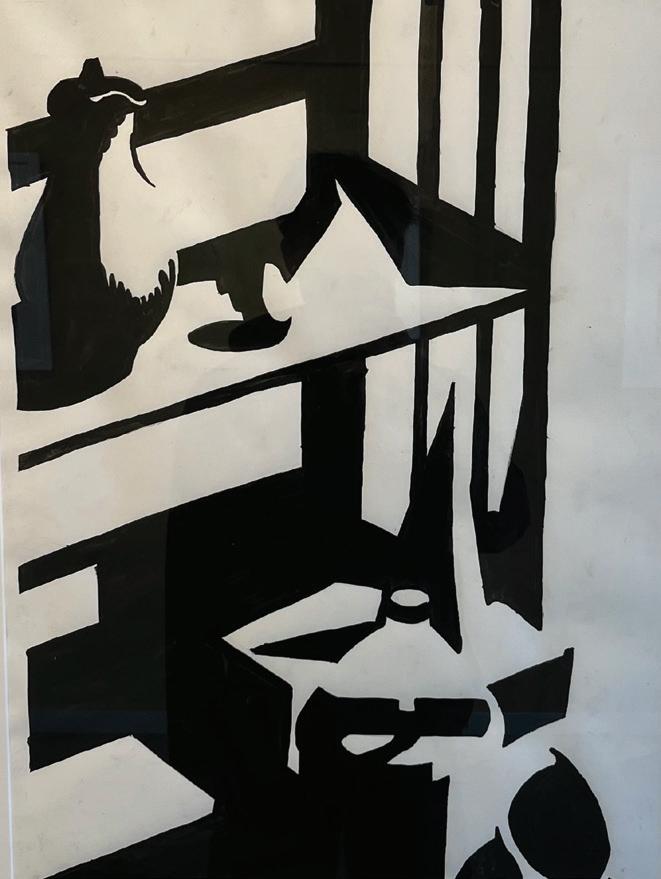
A preview of the upcoming International Week events.
Discussing photography with four nationally acclaimed students.
Senior movie enthusiast Blake Backes’ hot takes.
Beautiful Science: Exploring the Mind’s Canvas
WHEN Feb. 8 @ 7 p.m.
WHERE Horchow Auditorium
WHO Executive Director of Compassion Neuroscience Dr. Russell Toll

Fort Worth Symphony Orchestra

WHEN Feb. 3 @ 7:30 p.m.
WHERE Bass Performance Hall
As part of a tradition that goes back over a decade, students and members of the faculty come together in celebration of the diverse array of cultural traditions represented on campus. From food and song to language and trivia, the activities slated for this year’s event match the equally wide-ranging cultural representation on campus. Chinese instructor and International Week co-sponsor Janet Lin shares her involvement in planning the event, along with her motivation to put on the event year after year.
Later this month, students will gather around campus to watch the Chinese yo-yo competition, play against each other in a school wide Kahoot competition and test their knowledge with the annual trivia competition. International Week will take place the week of Feb. 20 and will have a multitude of activities for all students to enjoy.
International Week co-sponsor Janet Lin emphasized the importance of inclusion for the week’s events.
“It’s a school-wide event, so we want to include Lower Schoolers, Middle Schoolers and Upper Schoolers,” Lin said. “We have different things planned out throughout the week. We try to include every culture represented on campus, not just those from the three languages we teach.”
In order to get full participation from the community, Lin has partnered with clubs around campus for a lasting week full of activities.
“Since last year, for example, we have involved the Lower School in the poster contest, so now the whole student body can participate in the competition,” Lin said, “On Monday, we generate money with the Potluck, where we have partnered with the Elevated Cooking Club to provide dishes from a range of cultures. Every student can represent the culture and food from their background.”
In addition to the poster contest and other schoolwide events, Lin says the committee members plan to bring back the most popular events among Upper School students.
“In advisories, we have the Kahoot, and during the assembly on Friday, we have the International Week true or false trivia game,” Lin said. “[Faculty co-sponsor] Nancy Marmion and I are trying to get the committee members more involved, and we want to give them the opportunity to plan out what they want to introduce.”
Lin says she encourages the student committee members to take on the many responsibilities of properly planning and effectively running the schoolwide event, playing a more advisory role in meetings for months beforehand.
“Our role as co-sponsors is guiding them, and we will let them know whether an idea is good or not” Lin said.
“We have meetings almost every week, and we go through many plans; some are good, some are not. We started earlier in the year, so hopefully, we will have planned the event well.”
In order to fully embrace each culture for the week, there are specific days dedicated to a specific culture.
“Every day, we have a theme — Tuesday is Spanish Day, Wednesday is Chinese Day and Thursday is Latin Day,” Lin said. “Each of those days have events from past years, but [student co-chairs Bijaan Noormohamed and Morgan Chow] have been meeting for some time to plan new features throughout the week. The idea is to bring together the members of the student body, each with their own cultural backgrounds, so everyone can feel respected and accepted.”
Senior Aidan Peck finds International Week to be a special time for all students to enjoy.
“From the potluck to the International Week video, there is so much to enjoy,” Peck said. “I love watching our school come together and celebrate different cultures from around the world.”
For the International Week Potluck on Monday, Lin will bring out her cooking talents and provide snacks for all students to enjoy, a tradition of hers she has come to call her favorite part of the event.

“I only cook twice a year — the first time is for my students on Chinese New Year, and the second is for International Week,” Lin said. “I plan to make 200 dumplings by hand. The process of forming, cooking and bringing the dumplings here for students to enjoy took me like 10 hours, but I love it. It’s my favorite part of the event every year.”
For Peck, the school coming together and recognizing different cultures is really important for students to gain a better understand of life outside our community.
“Immersing ourselves in different cultures is key to becoming well rounded men,” Peck said. “Expanding our bubble and learning about the lifestyle of other cultures is something everyone can enjoy.”
Lin loves watching the school celebrate different cultures. Immersing students with all the activities through food and language is something she believes makes the week special.
“In every culture, food is representative of culture,” Lin said. “I enjoy the potluck on Monday every year, and I like the way every student can represent their culture and make a difference through the food they bring that day.”
Monday, Feb. 20
Morning: Internationally Themed Music
Community Time (Lower School):
International Week LS Chapel
Afternoon: International Week Potluck, in conjunction with the Elevated Cooking Club
Tuesday, Feb. 21
Morning: Spanish Music
Lunch: Pelele, baleros, rápido, cachito
Wednesday, Feb. 22
Morning: Chinese Music
Community Time (Upper School): International Week Chapel
Lunch: Chinese yoyo, Chinese checkers, Chinese chess, and ping pong
Thursday, Feb. 23
Morning: Greco/Roman/French Music
Lunch: Certamen (Latin QuizBowl), trigon, tabula, ludus latrunculorum
Friday, Feb. 24
Morning: Internationally Themed Music
Community Time (Upper School): International Week Assembly
Lunch: Kendama, menko, origami, piquet
Lunch (Upper School): “World-Cup” Soccer Tournament
Yale University’s Just Add Water improv troupe held workshops and performed on campus Jan. 9. The troupe, comprised of active Yale students, adds a unique twist to their acting by incorporating singing into their acts.
Fine Arts Department Chair Marion Glorioso connected with the troupe through Kemper Lowry, a former Hockaday improv actor.

“The Just Add Water group was going on tour over their Christmas break,” Glorioso said. “Kemper Lowry reached out to St. Mark’s and Hockaday to see if we would want them to come and do a show. I thought it would be a nice event for our students.”
The actors were quickly able to connect with the boys during the workshops.
“I think it’s very relatable for students because they see somebody up on stage that's close to their age or relatively close to their age,” Glorioso said. “I think it's always good to have a diverse group of people on our campus with different perspectives, voices and approaches to doing things, and this Yale improv troop provided that.”
Additionally, the troupe was very upbeat and brought a positive vibe onto campus.
“It’s high energy,” Glorioso said. “We’re creatures who like to be creative and play. Improv and theater are no different. It’s fun to be able to play and goof off with your friends, but in improv, there are structures you play within. You’re waiting to see what
somebody else will say or do and how it will impact what you say or do.”
Furthermore, Glorioso emphasized the added benefits improv provides compared to other performative arts.
“We all have these preconceived notions of who we should be or what we should look like, or how we should act, or how we should sound,” Glorioso said. “We think if we don’t fit within those parameters, we’re going to look stupid, or our friends are going to judge us. But who cares? Have fun being yourself.”
In improv, there is no wrong way to act.
“It’s not like being in a music class where you can hit the wrong notes,” Glorioso said. “When you’re doing improv, the worst thing you can do is just not have anything to say, and that's OK too. If you feel like you didn’t get it right, it doesn’t matter. You try, and that’s an accomplishment in itself. Be willing to be yourself and take risks.”
COMMUNAL CULTURE Students check out the variety of food brought during last year’s International Week Potluck. In addition to students bringing dishes from their own cultures, the International Week committee collaborated with the Elevated Cooking Club.

HAND PICKED
Taking thousands of photos combined, these seniors were the only photography students in Texas to win awards from the YoungArts competition.
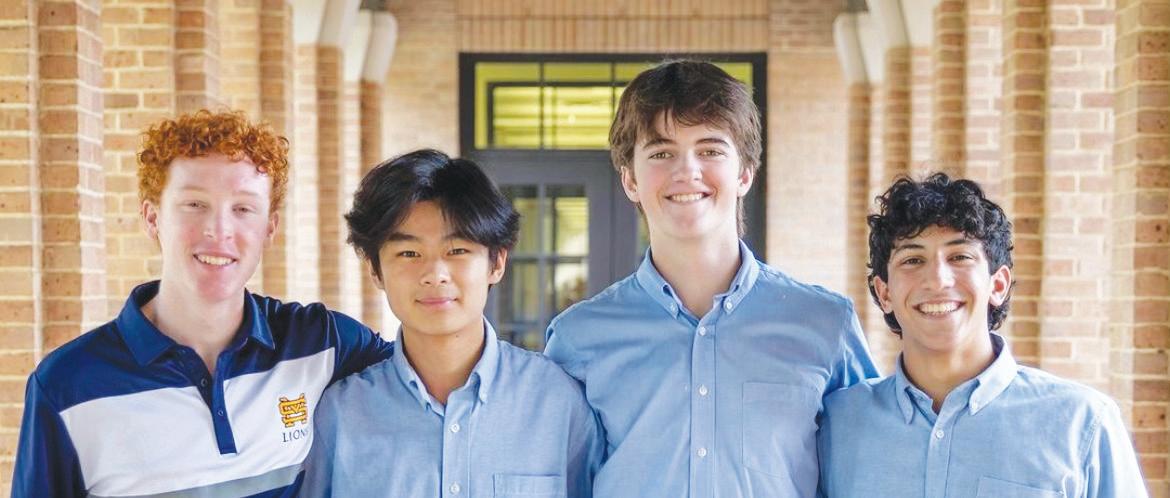
Seniors Charlie Estess and Neil Song were named two of ten photography finalists in the YoungArts competition, participating in National YoungArts Week Jan. 8 - 15 in Miami. There they presented their work and learned from artists from around the country. Seniors Jake Bond and Hayward Metcalf won merit awards. Hear from them about their portfolios and their photography journeys.
Matthew Hofmann: What was the theme behind your YoungArts Portfolio?

Hayward Metcalf: The basis of mine was going to desolate towns that had started to die out, and taking photos of the architecture, purposely trying to leave people out of the photos to show this dying town. There’s these two pretty famous photographers, William Eggleston and Stephen Shore, and they were very rural Americana. And I have always just been drawn to that style of street photography. And besides, we live in Texas, so it’s pretty easy to go find rural towns. I just enjoy going to towns, taking photos and looking for nuances. Most of them look the same, but some have little subtle differences that you have to look for.
Jake Bond: My story was screen addiction. So all the time that we spend on our phones, how we are on our phone before going to bed, texting and driving, all that kind of stuff — that was my scene for my images.
Charlie Estess: I submitted 10 images on my experience as a teenager with stage four cancer. So, the portfolio was designed in attempting to explore the most defining pillars of that experience.
Neil Song: I submitted two portfolios, the first one on Chinese heritage and culture comprised of very traditional pieces, for example, fans, the cherry blossom, the lotus, with all of these traditional symbols representing the heritage and culture that it came from. Also, the first conceptual portfolio is really keen on personal stories that are tied to some images, and so on, and so forth. And the second one was more abstract. It was a exploration of the concept of the moment before
something happens, what I call the critical moment. It explored all of the tension that’s built up in the moment before is then released in a sort of a catharsis.
Linyang Lee: How did you choose this theme?
JB: [Screen addiction’s] something that I get caught a lot in. I lose a lot of sleep because I’m on my phone in bed. I procrastinate a lot on my phone before I do homework. And it’s something that I noticed that impacts my life. And I wanted to try and show it to other people to see if it impacts theirs.
HM: I’ve just always found that idea of a small town life kind of interesting, but not in the way that I want [to live in a small town], because I'm perfectly okay living in the suburbs. But I still found it and that kind of closer sense of community interesting. So I just gravitated towards it.
CE: Artistic expression, when directed inward, can be a very healing process that can give a lot of closure to personal life.
LL:What draws you to photography?
HM: It definitely served as a tool for me to meet new people. I'm pretty close with a lot of guys in my class and I’ve met a lot of people in these small towns I went to because they always ask about the camera and they ask like, ‘Oh, what are you doing?’ Never really in an aggressive way, and always in a very serious way because they’re all very curious about outsiders. So it was just a way for me to talk to people I wouldn't normally talk to. And plus I get to show some of that expression and that emotion in the photographs.
JB: I really like the way that I can capture these scenes that I see and explain the story with images and not with words. People think about the picture. I think that’s kind of cool.
CE: I think photography has the ability to capture a moment in time, which in different contexts has the potential to be really powerful. So that’s why I love photography.
MH: What lessons has photography taught you?
NS: Initially, photo taught me how to look at the world in a completely different way and to appreciate everything going on. When you are out on assignment and doing street photography, for example, you have to be able to approach people and ask for portraits or when looking for architecture, you have to take notice of cool designs that you may have previously overlooked. You don’t notice all these elements of people and things moving until you look, and then you have all of these elements coming together to build compositionally beautiful but also meaningful image.
I think the second thing that I’ve learned from photography is attention to detail. Mr. Hunt stresses this a lot but it is very important. And it’s something I agree with a lot as well, because when you come in, especially when you start doing studio photographs, all of the picture quality comes from how you set everything up and how the lighting looks – all the small details. Something even like a tangent to the edge of the frame is going to be something that compositionally matters. It’s just the attention to detail in kind of artificially created or staged photos that is very important.
MH: How was the actual YoungArts week?
CE: I’m super grateful to have participated in the actual Young Arts week and the competition. The week inspired me and educated me with so many other talented artists in their own repesective fields. It also made me consider photography as a career.
NS: I would say YoungArts Week was amazing and getting to meet all the finalists is a super, super cool experience. You get constantly inspired by people who aren’t even in your discipline, and people obviously, in your discipline as well. You get to see so many different aspects of how you can use photography and the arts and all of that. I know I feel and I think Charlie would say the same that the YoungArts Week is a super, super great experience. Honestly, I think anyone in any arts at St. Mark’s should really apply and try to get to go because it's an awesome experience.
The frigid cold of Antarctica, the bustling streets of Portugal, the monasteries of Bhutan and the expansive Australian Outback are just a few of the trips Assistant Head of Middle School Jason Lange has taken. And along during trips, Lange developed his hobby and passion for photography, capturing the beauty of the world one photo at a time.
Lange now manages his colorful collection on his website Moon Base Operations and his Instagram. But while he has over 25 years of experience, Lange began his photography journey in his senior year of college, when his schedule gave him increased free time.
“I took an introductory photography class,” Lange said. “It was a classic film camera and darkroom development class. It was there I really fell in love with the technical aspect of photography.”
Following graduation, Lange took a gap year with
two roommates and traveled the world. During his travel, Lange really fell in love with photography, something he has continued even while teaching here, often talking with photography instructor Scott Hunt about photos.
“Mr. Hunt has made me more aware of the technical aspects that I add to my photos, whether that's how much I adjust the shadows or the highlights or the vignette,” Lange said. “Mr. Hunt has made me think about those things more since I met him 10 years ago.”
Editor's note: See page 28 (backpage) for these artists' favorite photos.
“Bhutan also really taught me how to make portraits for the first time,” Lange said. “I was always shy about meeting people and asking if I could take a photograph of you. The trip to Bhutan forced me to do that because some of the most interesting subjects in Bhutan are the people, the monks, the locals and the religious officials.”
This trip taught Lange how to approach people and strike up conversations with strangers, get them to be comfortable with the camera and then take a photo.
Continually, Lange has learned to embrace each moment and to be spontaneous in his search for a perfect photo, resulting in many of his favorites.
LANGEAlong with Hunt’s photography class, Lange traveled to Bhutan on a school photography trip. During this trip, one of his favorites, Lange learned a lot about photography and himself.
“Some of my favorite photographs are ones that I didn’t intend to take,” Lange said. “ I know I have the technical ability to go out and make whatever photograph I want to make, but ultimately, it’s important to not become too focused on chasing perfection.”
Four seniors won awards in the National Foundation for the Advancement of Artists’ YoungArts competition. MARKSMEN CROWNED INTERVIEWS Matthew Hofmann, Linyang LeeOscar season is right around the corner. This year, in an attempt to draw attention to the once revered awards show in today’s digital age driven by social media and streaming, the Academy has casted a wider net of nominations, including several smash hit titles like “Top Gun: Maverick,” and “Avatar: The Way of Water.” Will it be enough to increase the Oscar relevance?
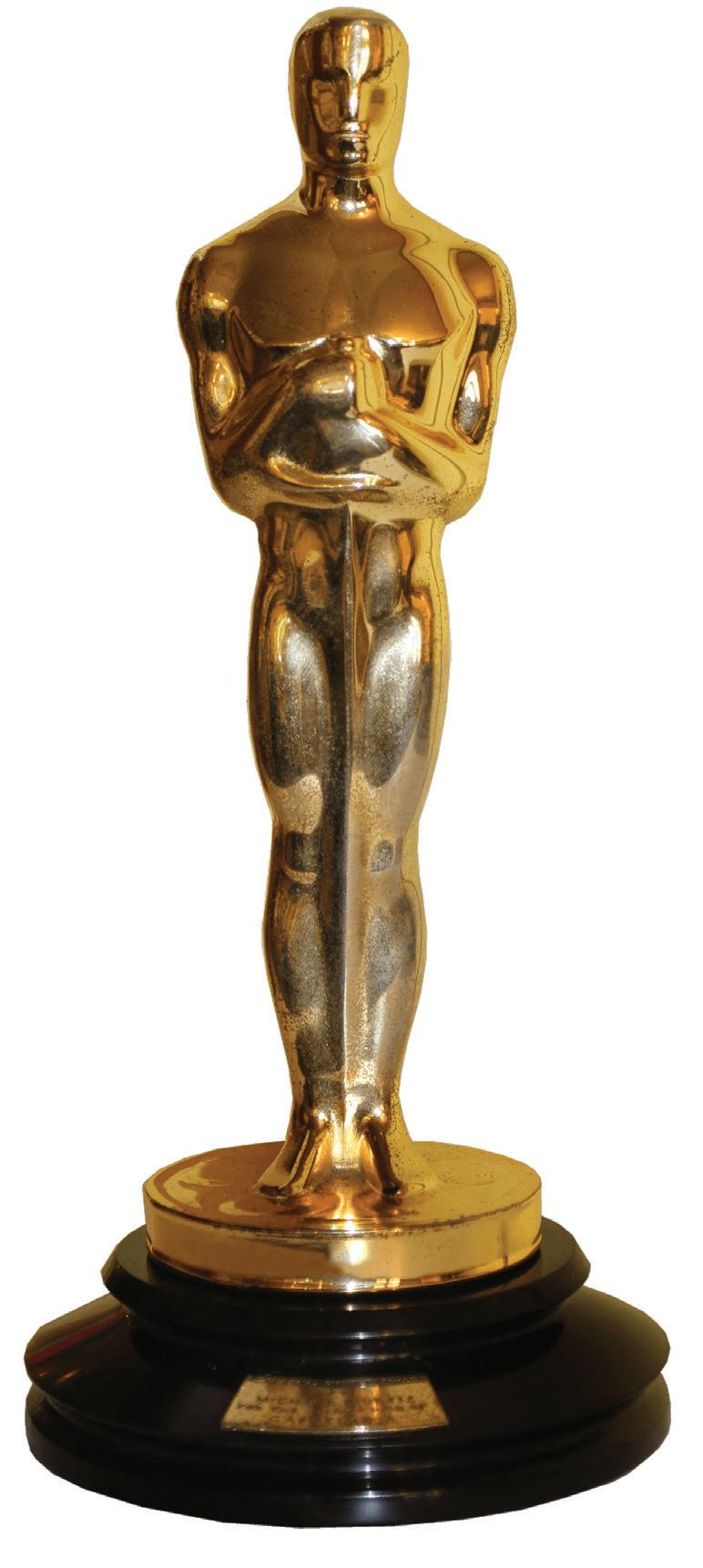 BY Blake Backes
BY Blake Backes
“The Fablemans”
“Top Gun: Maverick”

“All Quiet on the Western Front”
“Women Talking”
“Everything Eveywhere All at Once”
“Avatar: The Way of Water”
“The Banshees of Inisherin”
When James Cameron’s hit film “Titanic” won Best Picture at the 1998 Academy Awards, over 57 million viewers tuned in to watch. Two years ago, that number was nine million.
The Academy nominated another Cameron blockbuster, “Avatar: The Way of Water,” for Best Picture this year, though this constant proves a rare exception to the seismic shift the Oscars and the larger entertainment industry underwent in these past 25 years.
Blockbuster Video reached its peak, and then filed for bankruptcy, international markets in Russia and China grew instrumental in the success of movies and TV shows amidst ongoing globalization, franchise-based filmmaking crowded out mid-budget movies, social media usurped film’s position as the primary medium through which Americans consume media as content has adapted to fit TVs, computers and cellphone screens above colossal cinema screens.
Films themselves will always exist, but likely as just another form of content rather than the institution of American media which they once served as. The traditional “movie” an original work beloved by critics and audiences alike, filmed for the silver screen with dazzling cinematography and deified movie stars, serving as a keystone in pop culture canon—no longer exists.
The infinite individualization of recommendation algorithms on Netflix and TikTok presents high hurdles for contemporary films to reach the reference-ability of winners at the aforementioned 1998 Oscars such as “Titanic,” “Good Will Hunting” and “L.A. Confidential.”
When the public sphere adds new cultural references from films, they’re from the latest entries in long-running franchises. Last year, the combined box office revenue from all 10 Best Picture nominees failed to reach even a quarter of what “Spider-Man: No Way Home” made.
In fact, many of those nominees were box office bombs that lost the studios millions of dollars. No one watches the Academy Awards anymore and an Oscar nomination fails to correlate with a film’s commercial success or cultural impact, so who cares?
For the past several years, that question has rested at the forefront of the Academy’s mind. The 95th Academy Awards marks a year of firsts: Marvel’s first acting nominee, the Best Picture category’s first time nominating two films that made over one billion dollars, and the Best Actress category’s first Asian nominee.
These changes feel like a new beginning, but only time will tell whether they’re merely a death rattle. Despite ongoing transformations, the Oscars remain a century-old ceremony with ever-decreasing relevance.
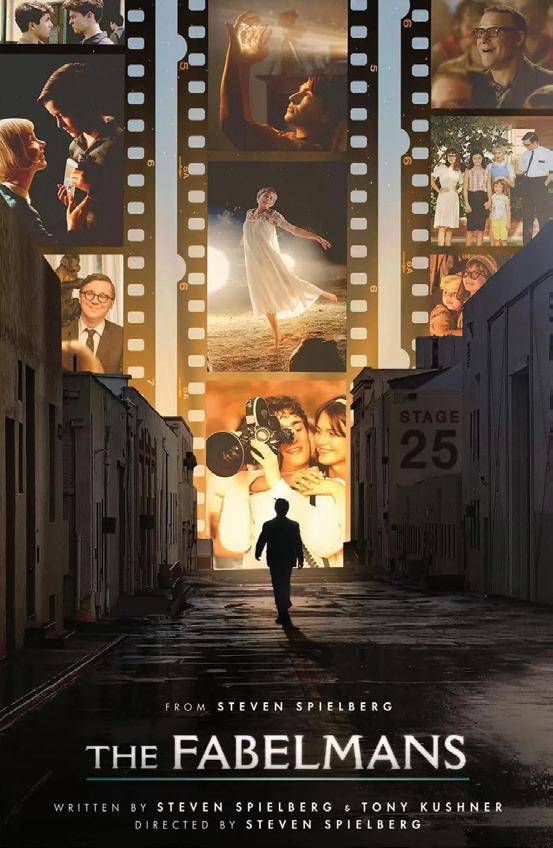
A live broadcast only available through cable TV feels obsolete in the age of streaming services. The Best Picture race’s double-header between “Everything Everywhere All At Once” and “The Fabelmans” exemplifies this crossroads between new and old Hollywood.
“Everything Everywhere All At Once” is a genrebending comedy/sci-fi/drama/action movie directed by two millennials, inspired by the chaos of the internet, produced by indie darling entertainment company A24.

“The Fabelmans” is a traditional coming-of-age story made by the most famous living director, inspired by his childhood in the ‘50s and ‘60s, produced by Spielberg’s Amblin Entertainment, which he founded in 1980.
“Everything Everywhere All at Once” made over $100 million from a $25 million budget, performing best among younger audiences, briefly earning the spot as highest-rated movie on the predominantly millennial and Gen Z-filled review website, Letterboxd, also receiving the most nominations at this year’s Academy Awards.
“The Fabelmans” raked in 20.4 million, just over half of its 40 million dollar budget, but it may be too universally heartwarming to earn the respected Best Picture award. “The Fabelmans” is a movie about filmmaking, and Hollywood loves nothing more than films about themselves (see Oscar winners “Sunset Boulevard,” “The Artist,” and “Singin’ in the Rain”).
I believe one of these films will win Best Picture and the other will win Best Director, but right now, I would have to guess that “The Fabelmans” will take the ceremony’s top prize.
Marketing and advertising teams will ultimately determine the champion of this fight between scrappy underdog,“Everything Everywhere All At Once,” and heavyweight champion, “The Fabelmans,” but beyond the scope of this year’s Academy Awards, I’m interested in the insights this Best Picture battle will provide as a microcosm for media’s ongoing struggle between innovation and tradition.
“Triangle of Sadness”
“Elvis”
“Tár”
Steven Spielberg (“The Fabelmans”)
Daniel Kwan, Daniel Scheinert
(“Everything Eveywhere All at Once”)
Martin McDonagh (“The Banshees of Inisherin”)
Ruben Östlund “Triangle of Sadness”
Todd Field (“Tár”)
Austin Butler (“Elvis”)
Colin Farrell (“The Banshees of Inisherin”)
Brendan Fraser (“The Whale”)
Paul Mescal (“Aftersun”)
Bill Nighy (“Living”)
Michelle Williams (“The Fabelmans”)
Cate Blanchett (“Tár”)
Ana de Armas (“Blonde”)
Andrea Riseborough (“To Leslie”)
Michelle Yeoh (“Everything Everywhere All at Once”)
ollowing “After Hours,” “Dawn FM” becomes the second release of an album trilogy exploring the journey from life to the afterlife.
This unique album centers around a drive through purgatory, listening to the fictional station 103.5 Dawn FM with radio host Jim Carrey.
To understand the whole story The Weeknd, Abel Tesfaye, is telling, take the time to listen to this album all at once. Full of emotion, love and regret, he reflects on his life as he travels down the road to the afterlife.
From the first song, titled “Dawn FM,” listeners will immediately be transported to a futuristic, mellow yet uplifting world, listening to Carrey’s soothing voice on his radio station as he delivers a thought-provoking and complex intro to the narrative about to be conveyed.
In the following songs, listeners will recognize
Tesfaye’s iconic voice, getting a taste of The Weeknd’s classic upbeat and dramatic music.
“Gasoline” is the apparent standout track of the album, providing listeners with a more vibrant melody and feeling than the rest of “Dawn FM,” a hit that will surely become one of The Weeknd’s most recognizable songs, potentially living up to the likes of “Starboy” and “Blinding Lights”.
The poetic closing to the album, narrated by Carrey, asks questions about life, love and repentance, telling listeners to “unwind your mind” and “train your soul to align.”
When the music fades, listeners feel as if they are transported into Heaven, absorbed by the “light at the end of the tunnel” teased throughout the album.
While the album is about reflection, in the end, the message is that there is a place for us all beyond this
world.
The only drawback to this complex narrative was a strange advertisement for the afterlife around halfway through the album.
The Weeknd attempts to tease the culmination of his journey, yet the fast paced announcement with amateur radio sound effects, even leaving a phony phone number, feels out of place.
The Weeknd crafts this complex story into a masterpiece of an album in a way only he can. The results leave listeners pondering the questions explored in the album, satisfied with the music yet craving more.
“Dawn FM” is undoubtedly The Weeknd’s most unique and expressive album, setting high expectations for the third and final album of the trilogy.
So if you haven’t had the chance to listen to “Dawn FM,” whether or not you’re a fan of The Weeknd’s past works, be sure to check his best one yet.
DESOLATION
On the southern border, large stretches of land are incredibly inhospitable to human life and largely unpopulated. In Texas, the Rio Grande and several mountain ranges make the journey north even harder for migrants. Dry and barren, food and water are scarce.
Enduring the harsh, arid climate of the borderlands, migrants travel vast distances in search of a better life. In the silence of South Texas's dry conditions, they face trial and tragedy beneath the star-studded night sky.

The internet. An endless spiral of “breaking news” on 24-hour news cycles. Twitter. Instagram. Facebook. Americans are bombarded with an unceasing stream of information from a variety of sources.
The media overload in our society often naturally leads to confusion and misinformation. The constant stream of news can also create news fatigue, where people become overwhelmed and disengage from conversations altogether. But sometimes, it’s simpler than that. Sometimes, news just gets overlooked in the chaos. The situation on the southern border has fallen into that trap, with information beyond attentiongrabbing headlines, like migrants in Martha’s Vineyard, notably absent from mainstream coverage.
During the annual Literary Festival Jan. 20, poet Martin Espada’s visit cast a renewed light on the situation on the southern border, broadening awareness in the St. Mark’s community. His poetry book, Floaters, has a poem of the same name which discusses the case of a father and his toddler daughter who drowned in the Rio Grande while attempting to cross the border. Read in many English classes in preparation for his visit, the poem and other parts of his work illuminate the human effect and dire personal consequences of the border crisis.
Thousands of migrants, including families and unaccompanied children, make the perilous journey to the border in search of a better life. Many flee violence and poverty in their home countries seeking protection and assistance, and their status as asylum seekers further complicates the immigration debate. Recently, the eruption of cartel-related violence in the western Mexican state of Sinaloa captured global headlines, but it’s merely indicative of the deeply entrenched and powerful nature of these cartels. On a wider scale, these systemic inadequacies and economic hardships must be addressed in the long term to resolve the border crisis.
But the clearest example of the lack of
compassionate responses to the border crisis is the detainment of children. One of the most notable examples is the Trump administration’s family separation policy. Implemented in 2018, this action resulted in the separation of thousands of children from their parents at the border, with many being held in overcrowded and unsanitary conditions. Although the policy was eventually rescinded after facing criticism, a National Immigrant Justice Center report concluded the Biden administration continues to separate
families. As such, human rights issues on the border have persisted despite the new administration.
The solution to the border crisis is far off. As students, however, it is imperative to remain informed and vigilant to issues present in our nation, like the plight of undocumented immigrants, and commit ourselves to discourse and empathetic resolutions that prioritize humanity and decency. Courage and honor are ubiquitous to Marksmen. Let's carry those values into the real world, today and in the future.
The ReMarker is intended for the students, faculty, staff and alumni community of St. Mark’s School of Texas. Press run is 4,000 copies, with more than 2,600 of those mailed out to alumni, courtesy of the school’s offices of External Affairs, Development and Alumni divisions.
OPINIONS AND EDITORIALS
Editorials represent the views of the Editorial Board and are not necessarily those of the Board of Trustees, administration, faculty or staff. All personal opinion columns, bylined with the writer’s name and photo, represent the views of that writer only and not necessarily those of The ReMarker, Board of Trustees, administration, faculty or staff.
SOCIAL MEDIA online viewing www.smtexas.org/remarker podcast @focalpointpodcast instagram @remarkernewspaper
READER INVOLVEMENT
The ReMarker encourages reader input through guest columns and story ideas. Contact the appropriate editor for suggestions.
LETTERS TO THE EDITOR
Letters to the editor are welcome and encouraged. They must be typed, signed and not exceed 300 words. Submissions are not accepted.
ADVERTISING
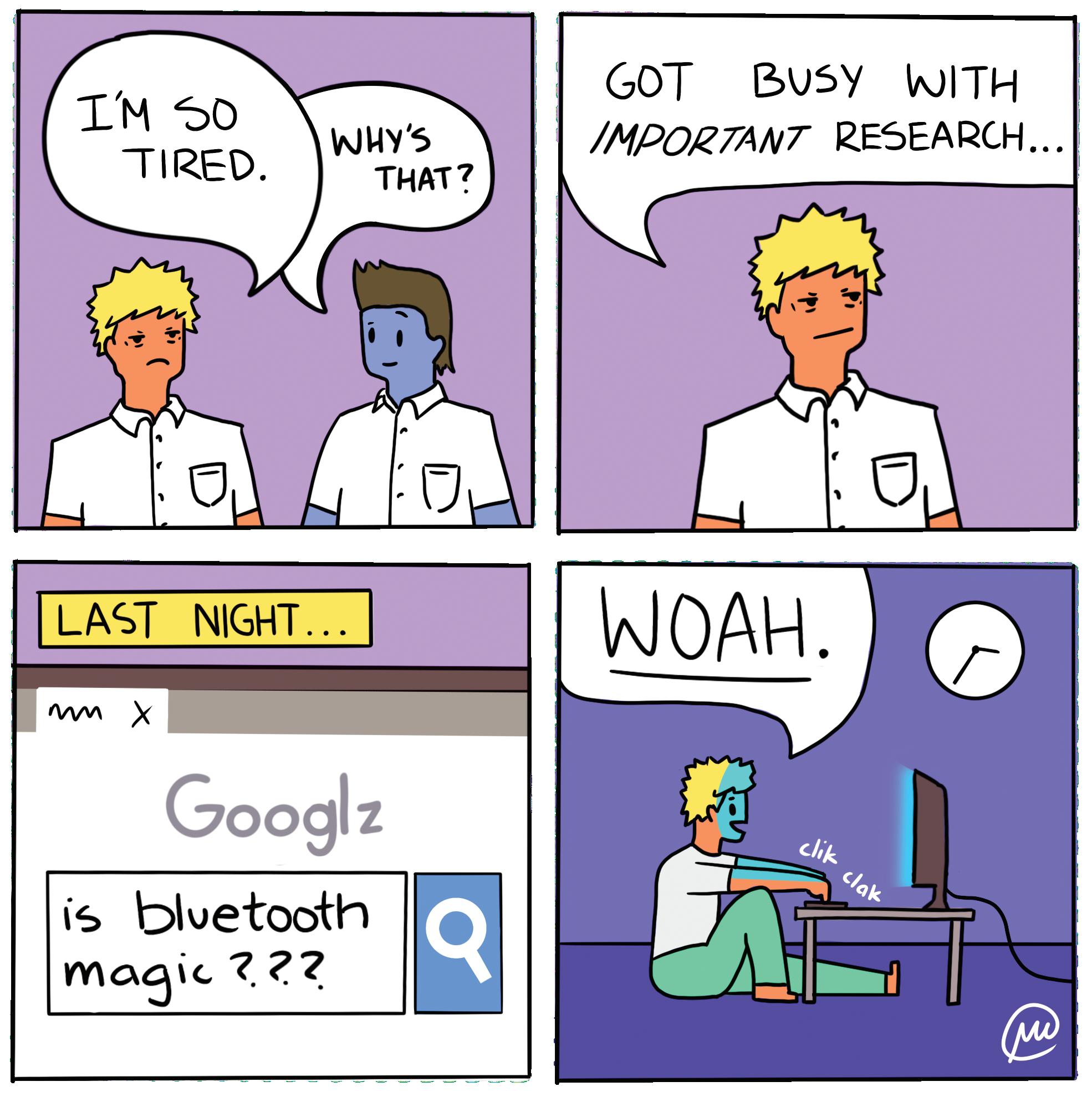
Contact the business staff at 214.346.8145. We reserve the right to refuse any advertisement. Inclusion of an ad does not represent an endorsement by the school’s administration, faculty, or staff or The ReMarker staff members.
MEMBERSHIP
The ReMarker maintains membership in the Columbia Scholastic Press Association, New York City, NY; National Scholastic Press Association, Minneapolis, MN; and the Interscholastic League Press Conference, Austin.
But the clearest example of the lack of compassionate responses to the border crisis is the detainment of children.

‘I won’t lie,’ I thought. That’s not who I am. “Guilty,” I replied.
“In that case, Judge Hammack would like to meet with you,” the clerk informed me. “The court date is set for November 29, at 3:45 p.m.”
When I walked into Highland Park Municipal Court that day, I figured I had two options: Either I’d pay the ticket from my earnings as a summer tennis coach — but still subject my parents to thousands of dollars in increased premiums — or I’d complete a 60-hour Drivers-Ed course. But Judge Hammack, to my astonishment, offered me a much more appealing alternative. He’d remove the citation from my record if I wrote an essay detailing what led me to break the law, an understanding of the specific law and future steps I’d take to improve my actions. I had one week.
The passionate English student and journalist in me saw this as much more than just a box to check; it was a challenge. Moreover — an opportunity to convince the judge that I deserved to have my slate wiped clean.
Seven days later, I walked back into court, essay in hand:
The sun began to disappear under the horizon as I raced out of the publications suite, grabbing the keys to my Toyota RAV4. Tennis practice was at 7 p.m., and it was ten till.
‘Coach is going to make everyone run suicides if I’m late,’ I thought. I can’t let the team down.
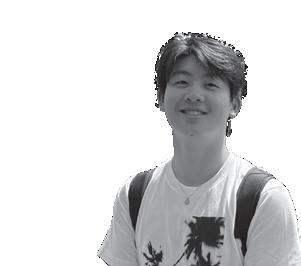
I hopped in the car, foot on the gas, winding through Preston Hollow’s bends before arriving just a few blocks from the tennis courts — with just seconds to spare.
But then I noticed — The red and blue lights dancing in my rearview. The sirens blaring as the SUV tracked me down. The there’s-no-way-this-is-happening feeling in the pit of my stomach.
My downfall? A big red octagon.
The stop sign laws in Texas are clearly defined. It is prohibited to run a stop sign, and a driver approaching a stop sign must stop before the crosswalk or at a clearly marked stop line. Stop signs are important to control traffic flow and can help control drivers’ speeds. In my hurry, I had a lack of judgment and rolled through the stop sign.
I will take measures to ensure I don’t risk my safety and the safety of those around me in the future. For starters, I’ll leave plenty of time to reach my destination. And even if I’m going to be late, I understand that putting myself and others in danger is not the answer.
Your Honor, I hope you understand that this reflection has served its purpose. Thank you for this opportunity.
But this convenience hasn’t necessarily translated into meaningful interactions.
I’ll never forget:
“In a few weeks, when you look back at today, you’ll laugh at how stressed you were.”
This mantra has gotten me through every challenging obstacle of my Upper School career, from history research papers to Dr. Perryman’s infamously difficult reading quizzes. After the most demanding period of my life during online schooling, this guiding principle has got me through all subsequent distress without fail. But for others, a simple saying isn’t enough to get them through the high-school slog of work and responsibilities.
It used to be simpler. Before Upper School, we received a homework binder and dividers every year to organize homework and class materials. Now, all we get is a textbook list and class syllabus; the rest is up to us.
With these new responsibilities arrived the unparalleled anxiety characteristic of this school. And we’ve all handled it in our own ways, healthy or not.
But as I near the end of my 12 years here, I wish I hadn’t had to face that by myself. Luckily, there’s a resource here located at C126 that will make sure you’re never alone.
Located on the first floor of Centennial Hall, the counseling suite offers the most convenient and valuable resource for managing academic stress.
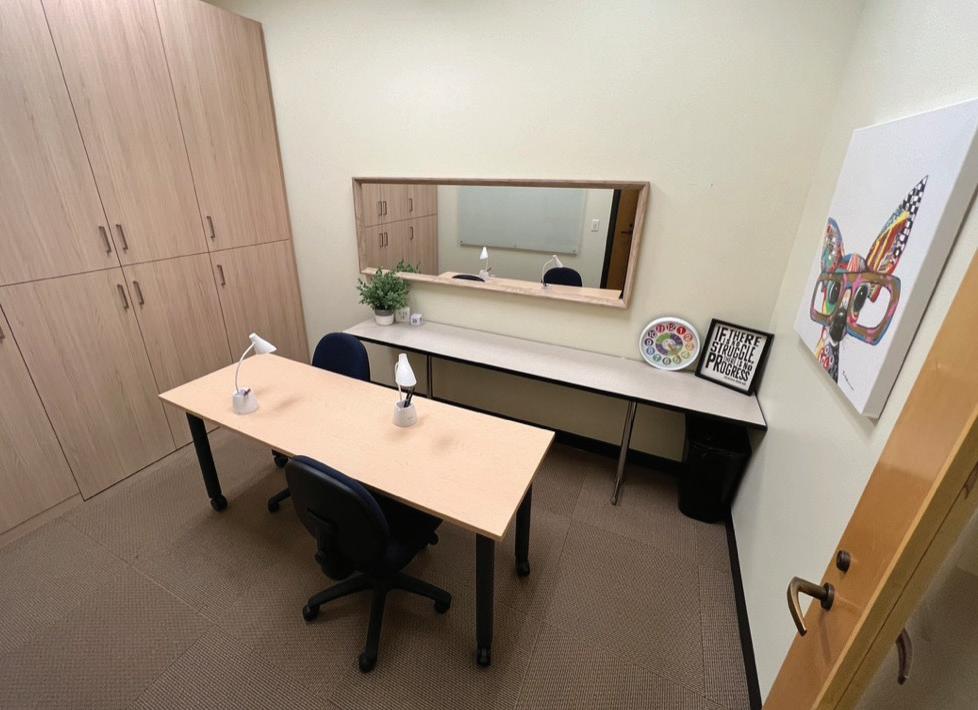
Especially for seniors who haven’t been beneficiaries of the new freshman and sophomore Health and Wellness classes implemented last year, I'd like to remind readers of this amazing, supportive resource.
Academically, the counseling suite can connect students with tutors, advise them on responsible study habits and work with teachers to manage heavy workloads.
Coordinator of Academic Support Julie Pechersky can provide personalized executive functioning coaching, like conducting weekly review sessions or developing skills with planner and binder use. Additionally, the suite houses a study room to take rescheduled tests, conduct meetings online in a quiet setting or even finish homework alone.
Emotionally, counselors Dr. Gabriela Reed, Dr. Mary Bonsu and Bridget Redondo-Doan are licensed clinicians trained to address all situations revolving mental health. Their services include connecting with community resources like therapists and advising with day-to-day functions.
I encourage all students to take advantage of the
Attendance for athletics has created an electric environment for athletes and fans, but the student section sometimes gets carried away.
A big congrats to all students and faculty for a successful first semester. Hopefully the second is just as good as the first.
Every Friday students can look forward to interesting and engaging assemblies created by Student Council Presdietn Sal Hussain.
The four guests that were on campus for Lit Fest had rough time interacting with each other at the roundtable discussion.
Lunar New Year
The annual Lunar New Year celebration did not dissapoint. With tons of activities, it was fun for the whole school.
Our high hopes for an underclassmen assembly were dashed by its disfunctionality.
Driving home from court that afternoon, I also considered the “stop signs” in my personal life. My parents ask me tough questions and offer advice when I need it most. My journalism adviser never imposes herself, but she’s always there, ensuring we’re ethical and unbiased. My best friend has always been by my side as we’ve traversed high school — he always has my back. These people are my second conscience — my big red octagons. I value them, and I respect them.
Now what in the world would compel me to share my stop sign escapade?
In a few months, I’ll be arriving at college’s shore, leaving my 10600 Preston Road bubble behind.
I see college as a place where I can take more risks, and I know I’m bound to make mistakes along the way. That’s when I’d turn to my close companions for a helping hand, the same way I’d be there for them — the same way Judge Hammack was there for me.
There’d also be days when commitments pile up, or when exam week stress might get to me.
I wouldn’t just run through those moments like I did the stop sign. Rather, I’d slow down and look “left and right,” assessing the situation. I understand the importance of reconciling the intersecting parts of my life. Sometimes the best way to drive forward my goals is to come to a complete stop.
And, in case you were wondering, Judge Hammack loved my essay and dismissed the ticket.
counseling suite — whether you think you need support or not, it’s only beneficial to peek your head in the counseling office and say hello or have a quick chat with any of them.
As mentioned earlier, seniors have not been as connected to this resource as other grades, so I'd like to see more contact with the counselors through classroom settings or administration-directed advisory activities for education and surveying.
Yet ultimately, it’s up to the students to remember that the suite at C126 always has its door open.
So don’t forget: You’re not alone.
Dear Editor:
I agree with Ishaan Siddamshetty ("Much of choir's repertoire is Christian church music," December 9) that it's fun to sing Christian music even if one is not a Christian. I felt the same way when singing hymns in daily chapen services at St. Mark's.
For example, the last line in verse 1 of Hymn 266, "God in three persons, blessed Trinity," could not have been further from my beliefs as a Unitarian; yet “Holy, Holy, Holy” was one of my favorite hymns to sing.
Music was my passion at St. Mark's. In addition to singing in chapel, I played trombone in the band and took lessons from Dallas Symphony Orchestra players. Today, I relive that favorite part of my life playing one hymn a day by ear from my 60s-era Episcopal hymnal.
I begin by singing the hymn's melody and playing it on trombone. Then, I play the melody and harmony on electric keyboard set to "Grand Piano." Finally, I swtich to "Pipe Organ" for the full St. Mark's chapel effect.
The words to some hymns leave me cold, but the words to others move me deeply when combined with the music.
Students can find support from those who offer it MORGAN CHOW Managing Editor
PERSONAL COLUMNPHOTO / MORGAN CHOW
Iknew I wanted to be a college athlete from age 6. Getting praised on campus all the time, getting the newest gear from Nike and Under Armour and training in practice facilities worth millions of dollars all drove this desire.
Of course, ESPN and YouTube were my main sources of information about what the perks for athletes in big-time college sports were like, so my knowledge was limited to the likes of Alabama and Oregon, whose athletic budgets seemed to rival the Department of Defense. It wasn’t until I devoted myself to playing golf that I discovered other paths.
Many personal factors come into play when deciding what school to attend; however, here are some tips and factors you shouldn’t overlook based on my experiences:
1) During recruiting, send personally written emails to coaches. Showing them your willingness to put yourself out there will leave a great impression. Many coaches I have talked to over the years say that they typically don’t bother reading the initial emails sent from recruiting services.
2) Find a coach or coaching staff that is enthusiastic about having you on their team. Go to a school where you’ll be pushed to your best potential and where you have coaches willing to help you grow as a person, while still loving your sport. Burnout is real, and holding the passion to compete all four years is very important to thrive.
3) Find a school with the resources to give you an athletic experience that will develop your craft and keep you healthy.
4) Find a program that will force you to succeed in the classroom. Taking care of all schoolwork prior to a game or practice will allow you to have a free mind and allow you to focus completely on your role on the field or court. You should know with your St. Mark’s experience how important it is to complete these tasks.
5) Find a school and an athletic program where you are willing to fully immerse yourself in its culture. Having pride in where you compete will make your experience unforgettable. You can’t thrive anywhere if you spend your days bored and unhappy.
Your hard work in the classroom and in athletics has hopefully allowed you to take your talents to the next level. Enjoy the recruiting process, and make the decision best suited for you.
Playing a sport can teach an athlete a lot of lessons, a big one being how to respond to adversity through injuries. See coverage, page 26
COLLEGE STARS
As collegiate winter sports have started, alums around the country have been training hard to stay competitive at the next level. Corvin Oprea ‘22 started the season strong with the Rochester Yellow Jackets as a guard, leading all freshmen in both scoring and rebounds. Andrew Laczkowski ‘20 has also been doing well with the Penn Quakers. His impact on the team is crucial as he boasts a 50 percent field goal percentage, an impressive feat. Rana Thakkar ‘22 has begun the first collegiate squash season ever played by a Marksmen, and the Dartmouth Big Green currently hold a record of 4-6.

HOSTING SPC
From Feb. 9 to 11, several soccer SPC tournament games will be hosted at Hunt Stadium, including both the 4A semifinals and the 4A final. The wrestling SPC championships will be held in Spencer Gym Feb. 11, and both the
preliminary and final rounds will be on that day.
JUNIOR BASKETBALL LEAGUE
The Junior Basketball League, also known as the “JBL”, has started its second season as a lunchtime basketball league at the school. The JBL combine, which featured 57 students on Jan. 18, showcased some of the players’ skills before the draft on Jan. 19. The league consists of eight teams of five. The first game was played on Jan. 23, and games will continue to be played four times a week until the playoffs begin. The playoffs will go until April 28, the day of the final championship game, and feature seven of the eight teams in best-of-three matchups.
SPEED SCHOOL
Coach Kevin Dilworth has started the “Speed School” program from 7 to 8 a.m. on Mondays, Wednesdays and Fridays. The program is available to all students in any St. Mark’s sport, as the program is
A quick glance at the stats, scores and schedules headlining Lions athletics.
PINNED
The Lions wrestling team, about to compete in the Prep States tournament and the SPC championship, has performed very well this season due to many key contributors, including senior captain Hayward Metcalf, who has gone 34-3 in his duels this season.
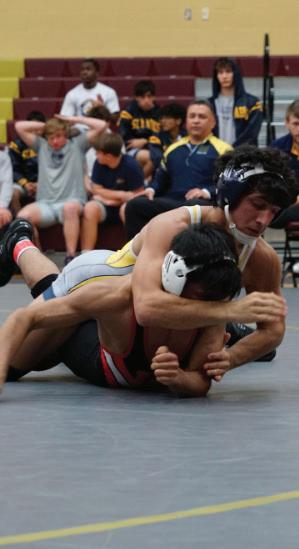
designed to help all athletes. Speed School teaches athletes running technique and how to run effectively. Additionally, it also teaches athletes about the importance of the weight room and how much it can benefit their performance in sports.
COLLEGE COMMITMENTS
After a successful year as the starting kicker on the football team, Senior Jacob Weinstein has decided to take his talent to Washington University. When deciding on where to commit, the academic prowess of Washington University immediately stood out to him. While going through the recruiting process, the one criterion he held for himself was to be interested in the university regardless of the football program. This year, Weinstein accomplished an impressive touchback percentage of over 50 percent. He believes his touchbacks, along with his raw kicking power and accuracy, make him ready to compete at the collegiate level.
Many athletes here have distinct stories that often differ from common beliefs about them.
Older siblings can raise expectations for younger siblings who play the same sport.
Kaleb Armbrust, a former professional soccer player, is now assisting the soccer program.
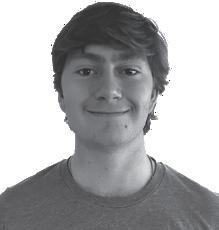
ACTOR-ATHLETES
Juniors Jimmy Francis and Ben Erwin have always been typical football guys, even before coming to St. Mark’s: strong, tough and imposing. But those assumptions were shattered when they decided to pursue acting — even in a school musical.
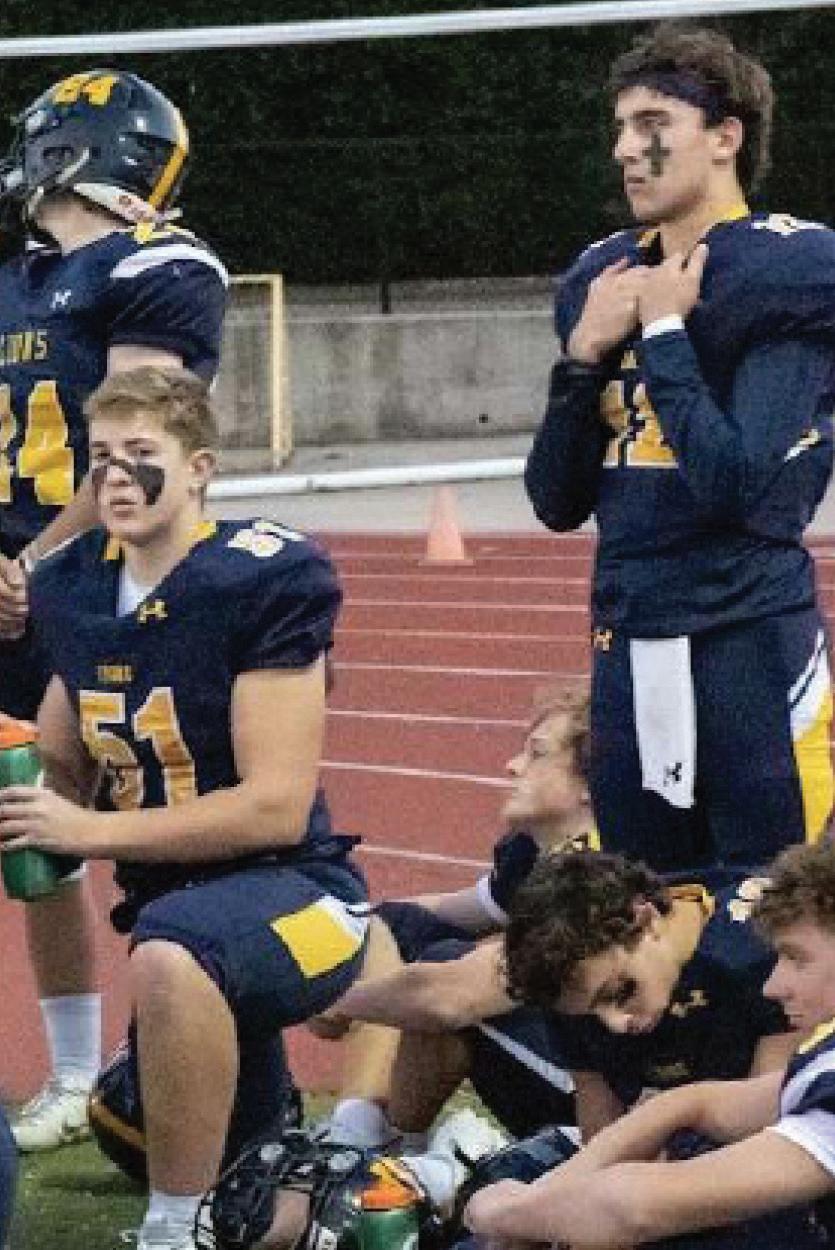
pursuits, Erwin feels there are similarities in the activities, which allows the transition between the two to be much smoother.
make a mockery of what I love to do. And they’re going to treat this as a joke and they’re going to treat it as just some game.”
This is not your stereotypical school. Students here cannot be pushed into a box based on just one of their many interests or talents.
This is a place where basketball players are dominating on the math team, and swimmers are up late sculpting a masterpiece in the ceramics studio.
And for junior football players Benjamin Erwin and Jimmy Francis, performing in a play was their point of difference.

Francis is grateful that students here are given the opportunity to pursue a wide range of interests. Starting from his days in the drama classroom and on the football field in first grade, he’s been able to find and juggle all his passions.
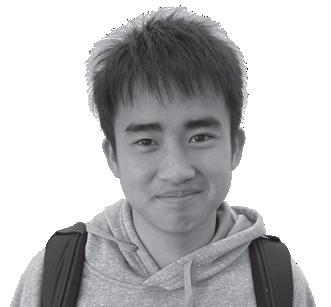
“It was always an option from early on to do both football and acting,” Francis said. “There were times when one took precedent over the other, but St. Mark’s has done a really good job of allowing me to pursue both at a high level.”
Erwin feels that the enviorment here encourages students to take what could be considered “social risks” and helps support students in their artistic endeavors.
“It’s definitely also a benefit of attending an allboys school is that guys are willing to put themselves out there a little bit more,” Erwin said. “The stigma around football having meatheads, and acting having less athletes is proven wrong here and I have learned that by experiencing both areas.”
While acting and football are two completely different
“I find them both very fun, and I like that they both have the team mindset you have to approach it with,” Erwin said. “That feeling of running onto Norma and Lamar Hunt Field feels the same for me as the adrenaline rush when you’re about to walk onto the stage and see the big lights.”
However, finding acceptance in both activities was not always easy for the multitalented duo. After starting their high school careers on the football field, some were skeptical when they were selected for the play during their sophomore year.
“When the cast originally found out that two football players who had just taken [Tony Vincent Fine Arts Department Chair] Mrs. [Marion] Glorioso’s acting class were going to be in the musical, I think some people were a little bit hesitant at first,” Francis said. “They probably thought: ‘They are a liability. Do they really belong here? Do they even want to be here?’”
Erwin is able to visualize the actors’ opinions about him and Francis when they first joined, as he thinks there would be a similar reaction if an actor joined the football team.
“I can see the stigmas they already had: ‘Who are these two meatheads? They don’t really want to be here. They’re not going to try, they don’t care,” Erwin said. “And it’s the same things I would have thought before I had started acting. If I had seen a lot of the actors coming out to join the football team, I probably would have thought about it the same exact way. They’re going to
Winter athletes in wrestling, soccer, swimming and basketball are preparing to compete in SPC Championships starting Feb. 10.
Sophomore wrestling captain Wyatt Loehr believes the team has a solid chance of improving their SPC placement from last year.
“Our continued training has helped each individual member of the team improve dramatically as well as bring us closer together as well,” Loehr said. “Along with that, the wrestling SPC Championship is at home this year. This should help us be more comfortable and perform at a higher level at SPC, which will help our placement.”
According to junior captain Ethan Gao, SPC is looking extremely promising for the swim team, as most
of the team hit new personal bests at the recent Southlake meet.
“At the beginning of the season, we were just all getting back into shape and coming back to our past best times,” Gao said, “but after the rigorous practicing that we’ve been doing, we’re going into a new territory of fast times. The times that the swimmers are finishing at now are much faster than last year, which gives me confidence that the team will perform well at SPC.”
This year, many veteran soccer players have suffered potentially season-ending injuries, but the team’s leaders still have faith in their
Erwin and Francis believe the stereotypes that surround both football and acting provide a gap that many students never attempt to bridge due to social pressures. However, these football players were not going to be stopped by what others thought about them.
“I’ve always really enjoyed both of them,” Francis said. “And I’ve never really listened to what people had to say about me. It’s always just been about what I like to do.”
Additionally, Francis has found a deeper level of self understanding through acting, because it has forced him outside of his comfort zone.
“It’s often hard to be vulnerable, and for me, acting’s given me a chance to really experiment with who I am and what I enjoy doing,” Francis said. “So that’s been really valuable for me – just becoming more comfortable being myself.”
Meanwhile, Erwin encourages others to step outside their comfort zones. According to him, it can lead to new experiences and relationships that wouldn’t have been possible prior to doing so.
“I just encourage anyone to go: ‘Okay, that seems kind of cool. Maybe I’ll give it a shot.’” Erwin said. “You really won’t regret it. That initial step is the hardest. Then after that, it’s really fun. I have some very good friends I’ve met through acting that I would have never crossed paths with otherwise. I think all people need to just explore and branch out – you really never know what you’re good at until you’ve tried.”
ability to compete in the tournament.
“The team has performed very well, winning by huge margins in the early counter-season,” junior captain John Ma said. “I believe that in the next couple of weeks, the team should be very close to full strength, which will help us immensely during SPC.”
Senior basketball captain George Genender is inspired by the team’s improvement since the beginning of the season.
“When the season started, we were reckless with turnovers and throwing passes to contested areas,” Genender said. “The team’s really shaped up and has started to play more patiently. With that change of energy, the team has been able to focus their efforts on working together and winning games, which explains our record in counter season so far.”
GRIDIRON MADE
Having both played football since a very young age, Erwin and Francis are now teammates on the varsity football team, where Francis plays quarterback and Erwin anchors the offensive line (right).
Both freshman Ian McGowan and sophomore Luke Laczkowski have borne witness to their families’ success on the court and in the water. Now, after patiently waiting their turn, they are under the lights.
All their lives they watched them dominate. They saw them break records and set new standards.
They’ve heard all the speculation.
But now it’s finally their time to step up to the plate and continue to build their family’s legacies. It’s time for them to not just be known as the little brother, but as their own person who made their own impact.
But, it’s not that easy being the little brother of an athletic legend. The pressure, comparisons and the attention seemingly never stop.
How can they make a name for themselves and step out of the shadow left by the giants who came before them?
How do they become their own men?
Growing up, athletics had always been an integral part of sophomore Luke Laczkowski’s and freshman Ian McGowan’s life. Luke’s oldest brother, Andrew ’20, won multiple SPC championships at the school and went on to play at the University of Pennsylvania, while his other brother, Tate ’22, won an SPC championship with the school and has gone on to compete at an elite academy.
“I’ve been watching basketball my entire life,” Luke said. “With my dad playing it in college and my brothers playing competitively since lower school, basketball became second nature to me.”
Luke feels the pressure from his brothers success, but in times of stress, he draws upon it as fuel to succeed.
“The pressure I feel is definitely a drive,” Luke said. “It gives me a stronger desire to succeed and pushes me to achieve the most I can. I set goals for the season based on what they achieved, so I aim for what they did. Hopefully, I can even surpass them.”
Though the eldest Laczkowski brothers have both been successful, the youngest is achieving his own success on the court. In just his second season on varsity, he averages 17 points per game as the team’s leading scorer.

“I feel some of my success this season definitely comes from my drive to live up to my brothers,” Luke said. “At the same time I want to have fun with what I’m doing and succeed in the process.”
Like his brothers, Luke dreams of playing at the next level.
“My ultimate goal in playing basketball is to go on and play at a higher academic college,” Luke said. “My brothers’ success plays a role in that dream but at the same time it’s a personal goal that I want to achieve for myself.”
While his brothers’ achievements are impressive, Luke
wants to not only be known because of his brothers but make a name for himself within the basketball community.
“My brothers have had some great achievements which I do want to live up to,” Luke said. “But really, I just want to have fun, succeed on my own, and make my own path.”
Similar to Luke, freshman Ian McGowan has big shoes to fill with his brother, Evan McGowan ‘22, currently rowing at Cornell. But as Ian settled into the sport his pressures began to fade away.
“When I started, I felt pressure because to my knowledge, Evan was the best there is,” Ian said. “I was scared I wouldn’t live up to that. But as I went on and began to understand the sport and have my own success the pressures I felt were relieved.”
Ian attributes a large part of his initial success to his brother’s mentorship and guidance.
“My brother helped me a ton,” Ian said. “He introduced me to the proper training and how to row in general. Before I joined the team, he showed me how to urg and would workout with me.”
For Ian, crew continued to develop from just a sport to a way to bond with family.
“I remember one day, I was erging with my brother and sister [Hockaday junior Abby Grace McGowan], and it was so much fun,” Ian said. “Moments like those are why I do this sport.”

In addition to his family giving him constant support, a few of Ian’s current teammates took the opportunity to help develop him develop any way possible.
“[Senior] Brendan Kelly and [junior] Zack Goforth would always workout with me,” Ian said. “They would always help me and push me to get better everyday.”
From his teammates and family, Ian has become one of the fastest rowers on the team, earning his way onto the varsity quad.
“It developed my passion,” Ian said. “It made me so much better. I’m sure I wouldn’t be close to as fast as I am now if Brendan didn’t ask me to get in extra work after practice.”
Now, Ian is completely driven on not just being as good as his brother, but being better than he ever was.
“A lot of my work as a rower goes toward beating my brothers records,” Ian said. “I want to leave this team knowing that I made my own mark and my own legacy.”
Junior Noah Cathey is a basketball fan. But, when he sees a star walking out onto the court near him, he doesn’t scream, wave or badger him for a picture.
For Cathey, it’s just another day on the job.
For five years and counting, Cathey has worked as a Dallas Mavericks ball kid.
“It’s a game-day-only responsibility at this point,” Cathey said. “I get to the game a couple of hours early, stay at the doors and pass out things like bobbleheads to the fans as they come in.”
Cathey’s most well-known duty, however, is mopping the floor during the games.
“The NBA has required all teams to provide some form of sweat-trapping, to find a way to prevent injuries due to sweat,” Cathey said. “Most teams have chosen a person that mops or towels down the floor during the game, so that’s our main responsibility as ball kids – to take care of the floor during basketball games.”
What some might perceive as an otherwise
mundane task becomes a mental game that requires concentration and focus.
“The job is challenging,” Cathey said. “You have to go out and decide, ‘Ok, am I going to have enough time to go out and get to this spot that’s very far, on the 3-point line? Or should I just wait and get it during the time out?’”
Cathey began working as a ball kid after attending a Mavs-run summer camp for basketball.

“I played decently well, had a good attitude, behaved well and whatnot,” Cathey said. “So the director of camp gave me an application to be a ball kid.”
For Cathey, being a Mavs ball kid is a family matter as well as an occupation.
“My dad was actually a ball kid before me,” Cathey said. “He started in 1995, in his sophomore year of high school, and was a ball kid from 1995 to 1998. Now he does stuff with the Mavericks, and I’m also a ball kid – it’s been a generational thing in my family and that’s been pretty cool.”
As a ball kid, Cathey gets closer than most fans to the action of the games – and the stars, leading to some
memorable moments.
“I’ve seen LeBron, Kevin Durant, Steph Curry, a lot of those guys,” Cathey said. “I worked Dirk’s last game. I worked Derek Harper’s jersey retirement. I worked on Christmas Day.”
And, this proximity has led him to a different perspective on the superstars loved and adored around the world.
“I think people don’t associate often with stars and celebrities,” Cathey said. “I think people assume that they are stand-offish or too high and mighty when most of them are actually very nice people. I wish that more people knew how nice NBA players are.”
Cathey takes away many lessons from being a ball kid, but he highlights learning early in life the importance of owning ones actions.
“I’ve learned accountability and responsibility, because it doesn’t matter that I’m 13, 14 years old,” Cathey said. “I have a duty to do my job to the best of my ability. If an NBA player falls, they don’t care how young I am. All they see is that I made a mistake. That’s one of the biggest things that they teach –accountability and responsibility at a very early age.”
Kaleb Armbrust is now known as an assistant coach for the St. Mark’s soccer program, but he was not too far away from making the big time and signing a professional soccer contract.
STORY Will Clifford, Matthew HofmannBoots on. Laces tied. The blue and gold jersey stripes still untarnished. The whistle blow, and the 80 minutes begin.
Assistant Coach Kaleb Armbrust stands on the sideline shouting instructions to his players.
He knows what they are feeling, because he used to spend the bulk of his time on a soccer field, too.
In fact, Armbrust was moments away from finalizing a professional soccer contract before his life took a turn in a different direction.
Now, Armbrust has turned to coaching to continue his passion for the game.
After falling in love with the beautiful game at the age of five, he worked tirelessly to become a professional. During his Freshmen year playing collegiate soccer at Azusa Pacific University in California, he finally got the opportunity he had been working for.
“In 2015, my brother and I went over to England and went on trial with Birmingham City,” Armbrust said. “We were only supposed to stay there for a day, but they really liked us, so we ended up staying for a few more days after that. The club eventually offered both of us a contract.”
Sadly for Armbrust, he could not get a work visa to stay in England.
“It was really hard for us when we had the offer we wanted but couldn’t accept it,” Armbrust said.
After playing against some of the most elite competition in the world, returning to the collegiate level felt like a step in the opposite direction.
“We were playing with some of the Under-18 academy players,” Armbrust said. “Now, a few of them are playing on really big teams. There were guys on the Under-17 and Under-18 national teams for England, Wales, Romania, and Scotland. My brother and I had to step up our play and adapt quickly to their level of play. Playing in college is a secondary thing to a lot of student-athletes. Whereas over there, it’s their life, and they’re all trying to get a pro contract.”
Armbrust and his older brother pushed each other to play better.
“Growing up, my brother was always very helpful, but he was also my biggest rival,” Armbrust said. “From playing against each other in the backyard to playing each other in practice, we always tried to come out on top. During the trial, we pushed each other to play better. My brother would have a really good practice, and I would have to step up. Then I would have a really good practice, and it would push him to play better. It was definitely a lot more helpful having him there on trial with me.”
Soccer never felt the same for Armbrust after he resumed his playing career at Asuza Pacific University.
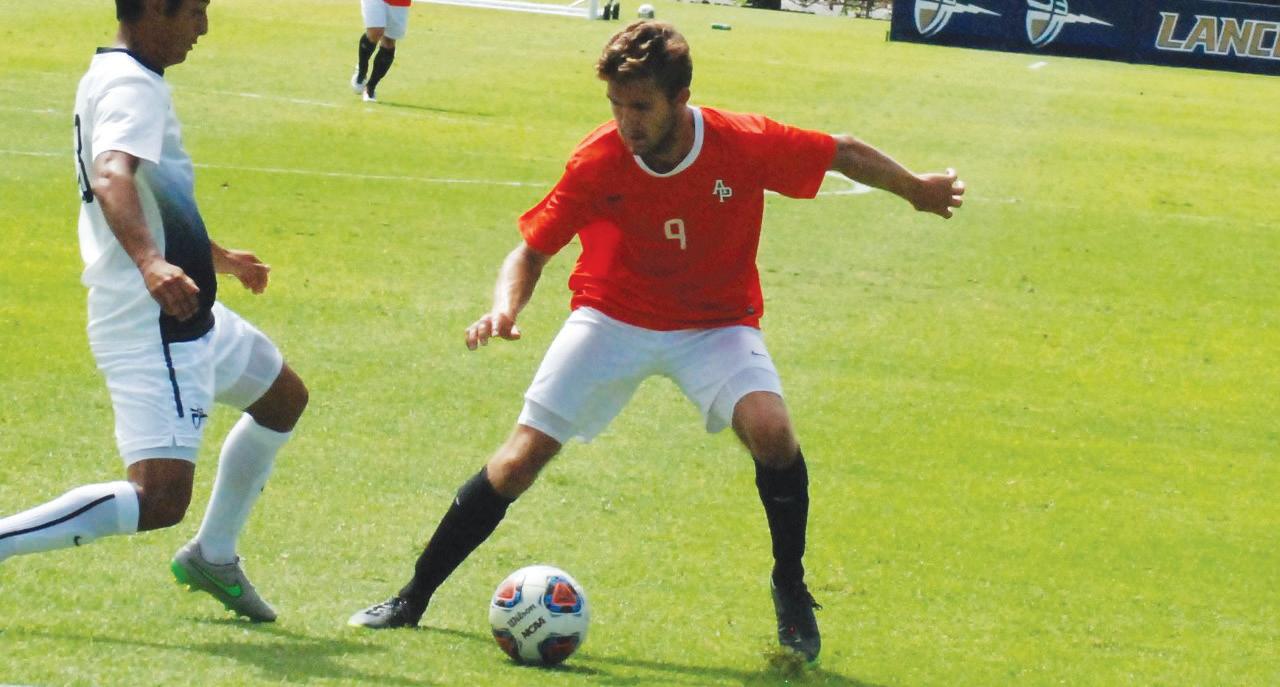
“My spirit was crushed,” Armbrust said. “There were issues with the team, and the rest of my time in college was spent while the team was rebuilding.”
But Armbrust kept his head up during difficult times.
“I got married a few months after graduating college,” Armbrust said. “If I had gotten the visa, I would have stayed and
taken the contract. I already knew my wife, but we weren’t dating at the time, so we wouldn’t have ended up dating or getting married. I’m quite OK with how things turned out.”
Although Armbrust’s wife encouraged him to stick with soccer career after college, he was ready to move on.
“I decided I did not want to drag her around from team to team,” Armbrust said. “She was just starting law school, and she was really passionate about becoming a lawyer. Even though she encouraged me to keep trying, I picked her career instead of mine.”
He believes he and his brother missed their opportunity to go pro.
“I do still question why my brother and I didn’t try and go play somewhere else,” Armbrust said. “We could have gone to play somewhere like Germany, France, Italy, or Spain.”
Even though he played his last competitive match in 2018, soccer still remains a large part of his life.
“When I went back to Sacramento, I knew a lot of people who were still playing,” Armbrust said. “I started playing soccer with some of them a few times a week. Then, when I moved out to Texas this last year, I knew I wanted to keep playing the sport I love. Eventually, I just found a place downtown where I could join a team and play.”
Armbrust said his father encouraged him to begin coaching.
“It was something I could use all my soccer knowledge and experience for,” Armbrust said. “I ended up getting in contact with Coach Cory Martin and began assisting with coaching the JV soccer team.”
With high aspirations, Armbrust hopes to one day coach at SMU or join the F.C. Dallas youth academy staff.

“Since I’ve been in a professional academy before, I could help those players who are trying to go pro here in the states,” Armbrust said. “I want to continue using the passion I have for the sport to inspire others to reach their full potential.”
Despite recent criticism against turf fields for allegedly higher rates of injury, Dr. Shane Miller, a sports medicine physician, claims athletes playing on turf are just as injury prone as those playing on grass.
In fact, he believes athletes suffer worse concussions while playing on grass.
“It’s not necessarily the grass itself; it’s what is underneath it,” Miller said. “That makes it a very interesting concept.”
Multiple NFL players have voiced their opinions against turf fields due to an increased number of on-turf injuries in the last couple of seasons. But Miller believes it’s not that simple.
“When you look at the patterns, you might get one injury evrey season for five years,” Miller said, “Then, all of a sudden, you get eight in one year. You might think there is a trend there, but in reality, it might just be a bad year, and you go back down to one the next year.”
However, Miller believes the turf’s age is somewhat of a factor in causing injury rates to rise in recent years.
“You’re supposed to recondition turf a few years after the manufacturer puts it in,” Miller said. “Then after people play on it, lots of soccer games, marching band contests, and football, the turf becomes a bit hard, and you see those injury rates rise.”
When looking at injuries on turf, most concerns revolve around knee and ankle injuries.
“I read a study this year around high school football and soccer players that stated ACL injuries were more likely to occur on artificial turf,” Miller said. “When you really break most studies down, ACL injuries are what people are really worried about.”
Miller feels it’s hard to hold grass or turf solely responsible for the injuries that occur over the course of the year.
“You also have to look at the condition of that day,” Miller said. “Was it sunny or rainy? What kind of shoes
were they wearing? It makes it challenging, even for those who do research, to pinpoint the root cause.”
Most schools use turf fields because it is cheaper than constantly maintaining grass fields.
“When you’re in a place like Texas that has issues with droughts, it takes a lot of water to maintain grass fields well,” Miller said. “Over the course of a lifetime typically, the turf is less expensive, and many school districts use turf because it allows them to have events without destroying the field.”
Miller thinks both surfaces have pros and cons, but he believes turf will remain the more responsible and used option.
“If grass was clearly safer than turf, then I would be willing to say that,” Miller said. “But you really need more information to make that kind of decision. Athletic directors aren’t just using turf because of the price, there are just so many benefits to turf right now that it would be hard to convince them to go in the opposite direction.”
CONTINUED FROM PAGE 22
The prospect of career threatening injuries, notably concussions, is nothing new to the sports world. But what happens when they occur repeatedly? Students share their journeys overcoming injuries and the lessons they've learned along the way.
He stands at 6-foot-2, and weighs 170 pounds — towering over the average JV basketball player in the SPC. He grabs rebounds over opponents. A post player, he dominates in the paint. For Baker Lipscomb, it's been basketball for as long as he can remember.
But for the past year and a half, he’s been off the court more than he's been on it.
In June 2021, while competing for his select basketball team, Lipscomb dove for a loose ball — his shoulder collided with another player’s chest.


He tore his labrum, dislocating his shoulder. The injury resulted in a surgery.
By mid-October, he’d completed over 25 hours in rehab and was excited to have been cleared to return to the court.
Then in November 2021, while performing drills during a St. Mark’s basketball practice, he crashed into a teammate, suffering an elbow to the head. Soon after, he heard the devastating news: a concussion. But by Christmas break, once again, he was cleared to play.
Fast forward to January 2022 when Lipscomb was back in action, competing in a Lions basketball game and showcasing his defensive abilities. He reached to strip the ball from an opposing player, but his arm got caught, and his shoulder twisted — the same one he’d previously injured. It was the same as the last time: a torn labrum, a dislocated shoulder and a surgery in his near future.
“I knew there was a possibility that it’d happen again, but I just didn’t think it would,” Lipscomb said.
With these injuries, came missing assignments, quizzes and tests. The make-up work was overwhelming.
“The school was great at helping me catch up,” Lipscomb said, “but my grades inevitably suffered.”
He promised himself and his parents that he’d be more careful, but it seemed he couldn’t catch a break.
In July 2022, he suffered a second concussion. A mere three months later, a third.
“I just couldn't take it anymore,” Lipscomb said. “At some point, I knew enough is enough.”
These factors, among others,
pushed Lipscomb to leave the court for good in early December, but his love of sports never died. What came next, he could’ve never imagined a year and a half ago.
Lipscomb isn’t the only student here to have suffered a concussion. The school handles around 30 concussions per year, according to head athletic trainer Matt Hjertstedt. Ever since the sports community has realized the importance of head safety and concussion prevention, the school has taken extra efforts to study concussions and collect information and statistics.
“We have been gathering data on concussions since I have been here,” Hjertstedt said. “What has become pretty consistent is that the majority of concussions that happen at St. Mark’s do not happen in athletics. Only about a third of them happen in athletics.” Hjertstedt reports that concussions at school are not equally common among all ages and that most concussions happen in middle school.

“The majority of concussions that have occurred are on a bell curve,” Hjertstedt said. “The curve peaks in during sixth, seventh and eighth grade.”
When it comes to sports where concussions could be considered most ‘routine,’ there are stereotypes that come to mind — notably in football.
“I think what they don’t consider is the number of athletes that a certain sport might have, like football,” Hjertstedt said. “We were close to 160 athletes in that sport and only had four concussions; those ratios are actually pretty good.”
Hjertstedt says the primary way to mitigate risk of concussions on and off the field is supervision. When there is control of situations — whether during a formal practice or during a pick-up game with friends during lunch — there are far less injuries.
He also commends the middle school health curriculum for advancing athletic safety knowledge among its students.
“In sixth grade, part of the health curriculum is talking about concussions,” Hjertstedt said. “We let them [sixth grade students] know that they are at higher risk. We talk about what causes concussions, how people recover from them and prevention strategies as well.”
In addition to education, another big component of prevention is neck strength.
“In the weight room we have the neck machines that are used by basically all our athletes,” Hjertstedt said. “Also, as part of warmup drills, we’re having athletes do neck exercises.”
Lipscomb wishes he’d invested more time building up his strength in transition periods.
“Maybe that would’ve prevented some of the future injuries,” Lipscomb said.
Across the board, Hjertstedt sees sports evolving to prioritize athletes’ safety.
“If we look at a sport like lacrosse, they are strict on any kind of head contact which will cause a penalty,” Hjertstedt said. “Over the past 10 years, sports have evolved. Wrestling has so many rules in place regarding concussions to keep athletes safe.”
Understanding the amount of risk of injury in each sport is vital in making a decision on which sport to play, or what games to engage in during free time.
“Every sport has risks,” Hjertstedt said. “But the numbers show that the chance of concussions in any sport is really low.”
Be that as it may, after numerous devastating injuries, Lipscomb knew basketball wasn’t meant to be. He opted for a sport with a lower risk of injuries all around, especially concussions.
“My dad had been encouraging me to choose another sport,” Lipscomb said, “and he suggested swimming, so I was like, ‘Why not?’ The last time I swam competitively was in the fourth grade.”
While some people may have struggled with the sudden change of sport, Lipscomb has not batted an eye and dove head first into the program.
“It’s quite impressive that Baker has made the kind of progress he has in a short period of time,” varsity swimming head coach Trenton Calder said. “He is a go-getter who works hard, and it’s amazing and inspiring to see how well he has done in such a short amount of time.”
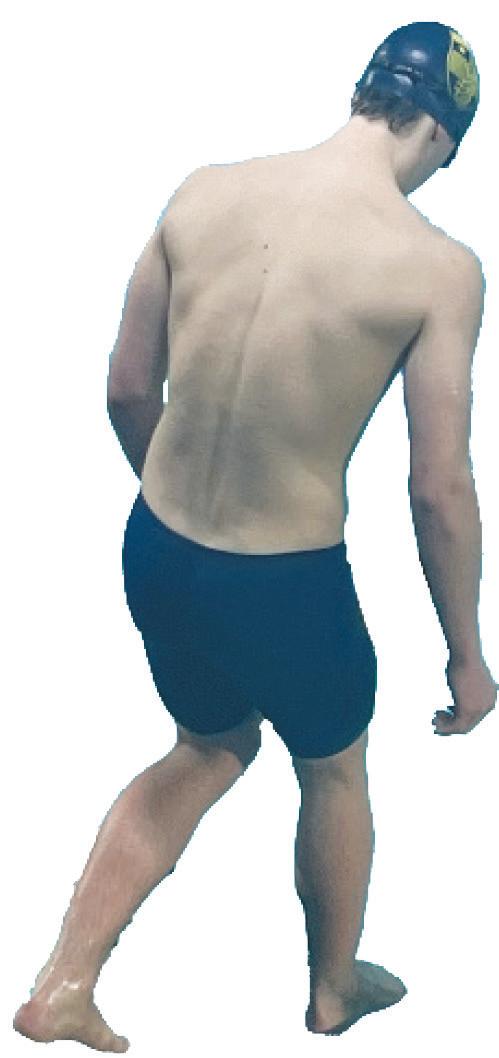
Lipscomb, a natural swimmer and quick learner, doesn't make the same mistake twice.
“He is a fish in the water,” Calder said. “He just jumped in and started going. He also takes instruction very well. When I talk to him about a couple things, he picks them up quickly and commits them to muscle memory.”
Lipscomb’s transition from the basketball court to the pool has been seamless.
“His personality meshes really well, and his work ethic has been great,” Calder said. “It’s also been really fun to see how the guys get fired up around him, because he is an upperclassmen trying something new and succeeding. Everyone’s excited to see him do well.”
Lipscomb plans to finish out this season, swim for a club team over the summer and be back again for his senior season. He sees this new opportunity in a new light.
“Through these injuries, I’ve learned how important it is to take advantage of athletic ability and simply being able to play a sport while you can,” Lipscomb said. “I love basketball so much, and right now I wish I had put more into every practice and game and really appreciated those moments while I had them. Now, with swimming, I’m giving my maximum effort, because I only have the rest of this season and next year to compete for the Lions. I won’t take this opportunity for granted.”
15.1% of all students who have reported at least one concussion
6.0% reporting two or more concussions
300,000 estimated annual sport-related traumatic brain injuries
>1.2 million
90% of students athletes report some form of sports-related injury
21% of all traumatic brain injuries among children associated with sport activities
54% of students atheltes report continuing to play while injured
To many on the outside, highly recruited high school student-athletes have a seemingly free ticket to an outstanding collegiate education and experience and many times, they do. However, all it takes is one hit — one awkward plant of a foot, even — to derail plans that seemed foolproof just a moment before. These injuries can effectively ruin the life these teenagers once had. But some athletes come back stronger than ever. Senior Keats Leffel and junior Raja Mehendale are trying to do just that, working their way back to athletic scholarships.
Senior Keats Leffel, a varsity football captain, dislocated his shoulder several times during his junior season but was able to keep playing as a linebacker throughout the season. However, his fortune quickly changed early in his senior year.
“In the first game of this season right before halftime, I made a bad tackle and dislocated my shoulder pretty badly,” Leffel said. “They were able to pop it back in, but the main issue was that I tore my labrum.”
Leffel, who had attended several college football camps over the summer, planned to play at an academic Division III school. But he soon found out he wouldn’t be able to play linebacker for the rest of the season due
For junior Raja Mehendale, a cross country and track recruit, the stress fracture in his foot came right before a key moment in his recruiting process.
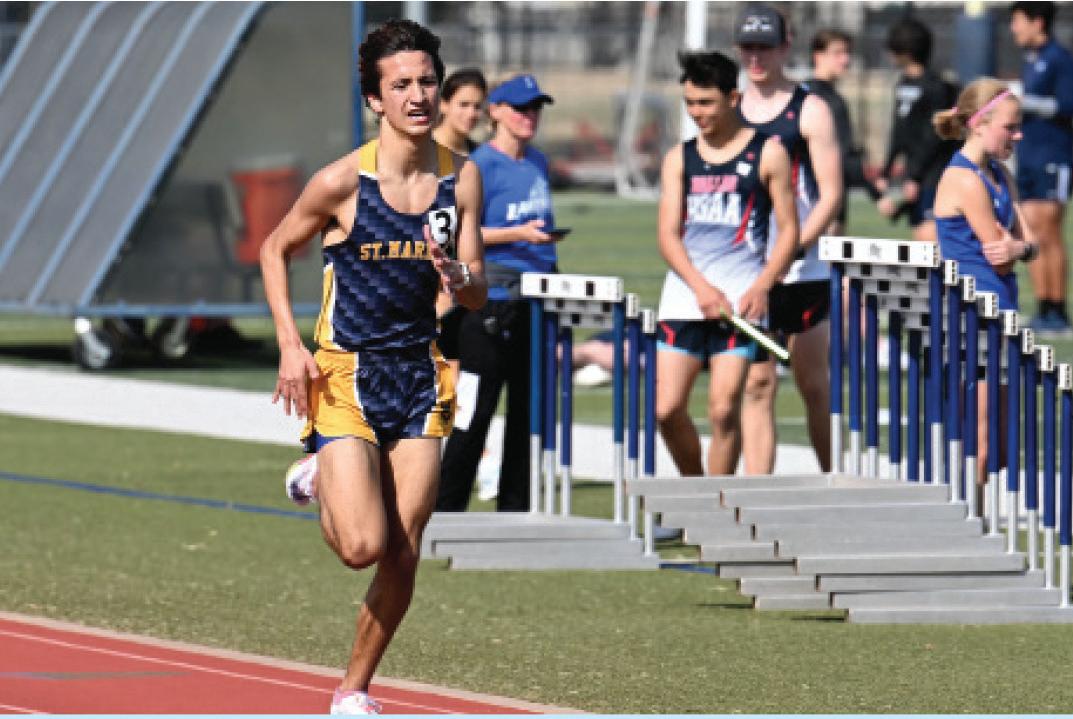
“The plan for this season was that hopefully I was going to break 16 [minutes] in the 5K,” Mehendale said. “Running under 16 gives you a good option of where you want to go to college, and if you combine that with St. Mark’s academics and other extracurriculars that St. Mark's offers, it makes you a very attractive candidate for a school.”
In a sport where most of an athlete’s recruitment is dictated by the time on a stopwatch, getting the fastest marks possible in limited opportunities is crucial — and unfortunately, this injury will keep Mehendale from participating in a key recruiting season.
“The recruiting process starts a lot later for cross country and track than it does for any other sport
to the nature of his injury. Even so, Leffel would not be kept off the football field.
“Originally, my thought was that I’d be a linebacker in college, because that’s always what I played on varsity,” Leffel said. “But when I got injured, it helped that I played running back in middle school, because that ended up being the only position I could play.”
Leffel finished his senior season with nearly 600 total yards and seven touchdowns for the Lions, and his scholarship opportunity at the end of the season rivaled that at the beginning — with one major change: his position.
because so much can change between even your junior and senior year,” Mehendale said. “But recruiting really ramps up during your junior year, and they always say the most important season is your junior track season. That's something that I will miss, but it’s not the end of the world.”
Between Mehendale’s guidance from former runners here, such as college runners Fisayo Omonijie ‘22 and Sahil Dodda ‘22, Mehendale has learned a lot about how the process works — including some unorthodox options athletes can take.
“I think the ‘13th year’ is something that’s really interesting to think about because the boys develop so late, and having that extra year of running before you go into college, especially with my injury, can help with recruiting,” Mehendale said. “I think that's certainly
“Running back is what I’m mainly being recruited for,” Leffel said. “So I don't know if the injury necessarily hurt me at all with recruiting. I think it might have helped.”
Leffel is now deciding between playing football at Sewanne, Hendrix, Millsaps or Rhodes College. To Leffel, his story shows that anyone who has enough passion for their sport is capable of coming back and playing.
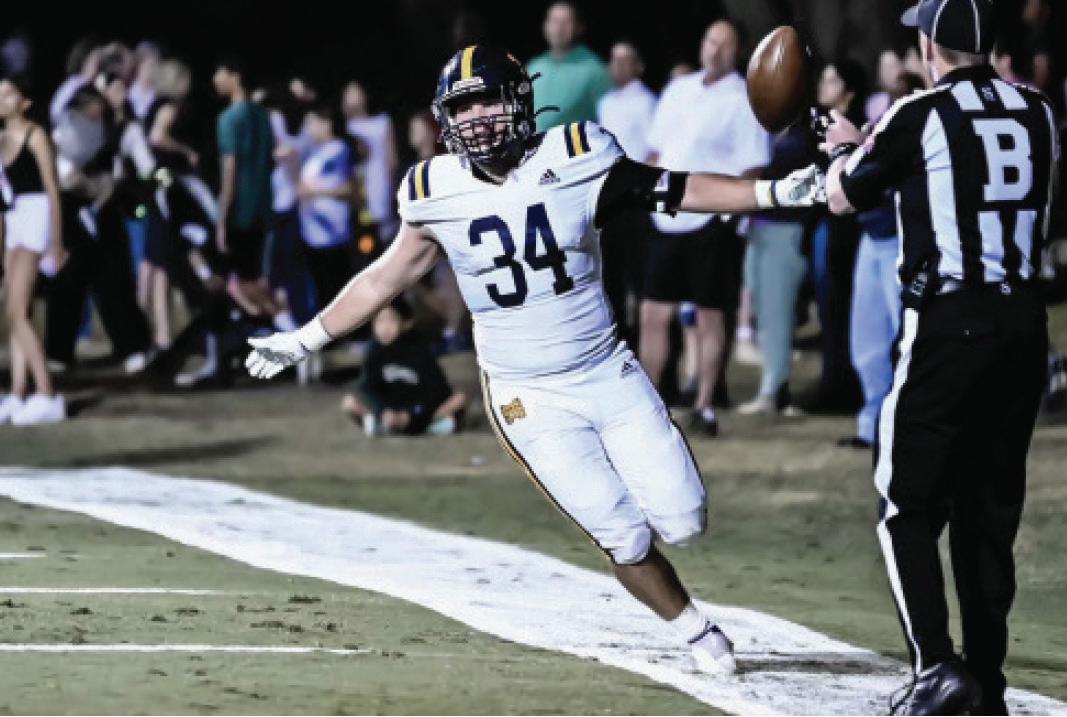
“If you really love your sport, and you get hurt but have the opportunity to come back, do whatever the coach tells you, because playing is all that matters,” Leffel said.
possible, but they're also less meet opportunities for 13th-year students, which is what I’ve found doing some research.”
While Mehendale is working hard every day during his physical therapy process after his surgery and has many options to explore, his future remains uncertain. To him, his injury emphasizes the importance of not putting all your eggs in one basket.
“I thank St. Mark's, my parents and college counselors for instilling in me that even though I’m an athlete, I still need to keep my grades up, because unfortunate circumstances can happen,” Mehendale said. “Obviously, I would love to come back to where I was, or hopefully even better, but there's always a chance with hardware in the foot that you don't come back better and never attain the level that you competed at before.”
POISED FOR GREATNESS
Mehendale runs a long-distance race for the Lions last year (far left).
Leffel celebrates after scoring a Lions touchdown as a running back (near left).
